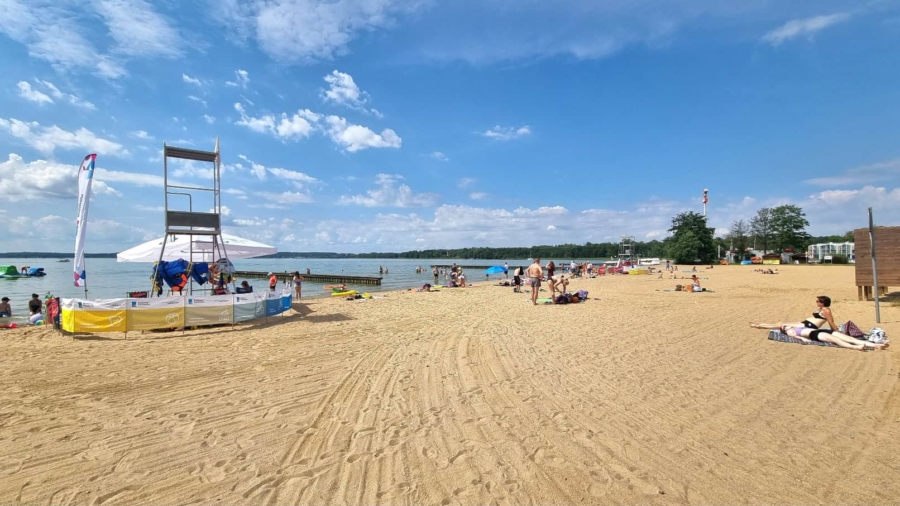My visit to the Masurian Lake District town of Giżycko in July 2024 came right out of the blue.
Originally, my wife and I were keen on taking advantage of a short-lived heatwave to visit a seaside resort on the Baltic coast that we’d never been to. That plan fell by the wayside due to rip-off accommodation. Hence, we turned our attention to the Masurian Lake District for inspiration.
I found a presentable apartment on Booking in Giżycko which cost less than an arm and leg. We settled for a one-night stay.
A Few Facts about Giżycko, Poland
Giżycko is picturesquely situated between two lakes – Kisajno and Niegocin – in the region of Masuria within the Warmian-Masurian Voivodeship. It’s a small town with 28,597 inhabitants (December 2021). With 110 lakes, Giżycko County is at the centre of the Masurian Lake District. Giżycko plays host to a number of sailing championships every year.
Aside from the allure of the two aforementioned lakes, Giżycko possesses an abundance of historical monuments, most notably a 14th-century Teutonic castle.
From the moment Giżycko Castle was built in the 14th century right up until mid-1945, the city was called Lötzen in German (in a more or less similar form), and among the Polish-speaking population, Lec, and earlier probably Liecz. The population arriving here at the end of World War II initially used this old Polish name. Thereafter, this name evolved into Łoczany (a 19th-century Polonization of the German name), and then Łuczany.
The new residents of the town liked the new name. However, The Commission for the Determination of Place Names (Komisja Ustalania Nazw Miejscowości) wanted to avoid absolutely all historical associations with Germany. Therefore, the commission decided to name the city Giżycko in honor of Gustaw Gizewiusz (whose family name was Giżycki). Gizewiusz – a Polish political figure – was born in Johannisburg (present day Pisz) and had little to do with Giżycko itself. Despite strong opposition from both the local authorities and residents of the town, the decision entered into force on May 19, 1946. The decision was finally confirmed on October 26.
Day 1 – Travelling from Gdańsk to Giżycko
My wife and I woke up at around 05:45 a.m. It took us around 25 minutes to get our belongings together and load everything into the car.
The outdoor temperature and early morning sun on the road from Gdańsk to Elbląg suggested it was going to be a hot day. Well, we found ourselves splashing about in Lake Niegocin by the middle of the afternoon. It was hot but not unbearably so.
Anyway, Google predicted the journey from Gdańsk to Giżycko would take around 3 hours and 10 minutes. I appreciate Google Maps for the directions it gives (more so than the ridiculous satnav in my Ford Kuga). However, the journey times it provides are invariably on the optimistic side. Google Maps always seems to presume that your car, and your car only, is the only car in the world. It took us around four hours to get to Giżycko, although we did take a 15-minute break. I also took a wrong turn after passing Olsztyn which cost us around eight minutes.
Passing through the villages of Mazury, it’s little surprise that nostalgia for days gone by in Poland hit me once again. Any signs of greenery, quaintness and a slow pace of life take me back to my time in and around Mszana Dolna back in 2005. I don’t visit the Polish countryside all that often. In recent years, I’ve taken the odd trip to the Kashubian Landscape Park and that’s about it.
Anyway, we arrived at the apartment building at around 10:15.
First Impressions of Giżycko
In all my time in Poland, I haven’t visited that many lakes at all. In fact, Poznan’s Lake Malta, lakes Ukiel and Długie in Olsztyn, Lake Otomin near Gdańsk and a few lakes in the Kashubian Landscape Park, are the only lakes of note I’ve been to. Therefore, I was more than excited in the days leading up to my visit to Lake Niegocin in Giżycko.
My wife and I headed out of our apartment building a little after 10:30. The plan was to head straight to the shore of Lake Niegocin. As we strolled around the John Paul II roundabout and then down Unii Europejskiej Street, it hit me that Giżycko has a bit of bustle about it – even away from the water.
As you enter the beach park area by the lake opposite Generała Józefa Zajączka Street, you’ll notice several ice cream shops and hot dog stands. It was no time for snacking as we explored across what is quite a large beach park. There are plenty of trees here which offer shade. I also noticed that there is plenty of playground equipment for children, a volleyball court and a lifeguard monitoring the lake.
We were dying for a cappuccino. Eventually, we stumbled across Restauracja Porto right by the main canal in Giżycko – Kanał Łuczański. Watching the world by and observing the boats cruising to and from Lake Niegocin, it was the most relaxed I’d felt in a long time.
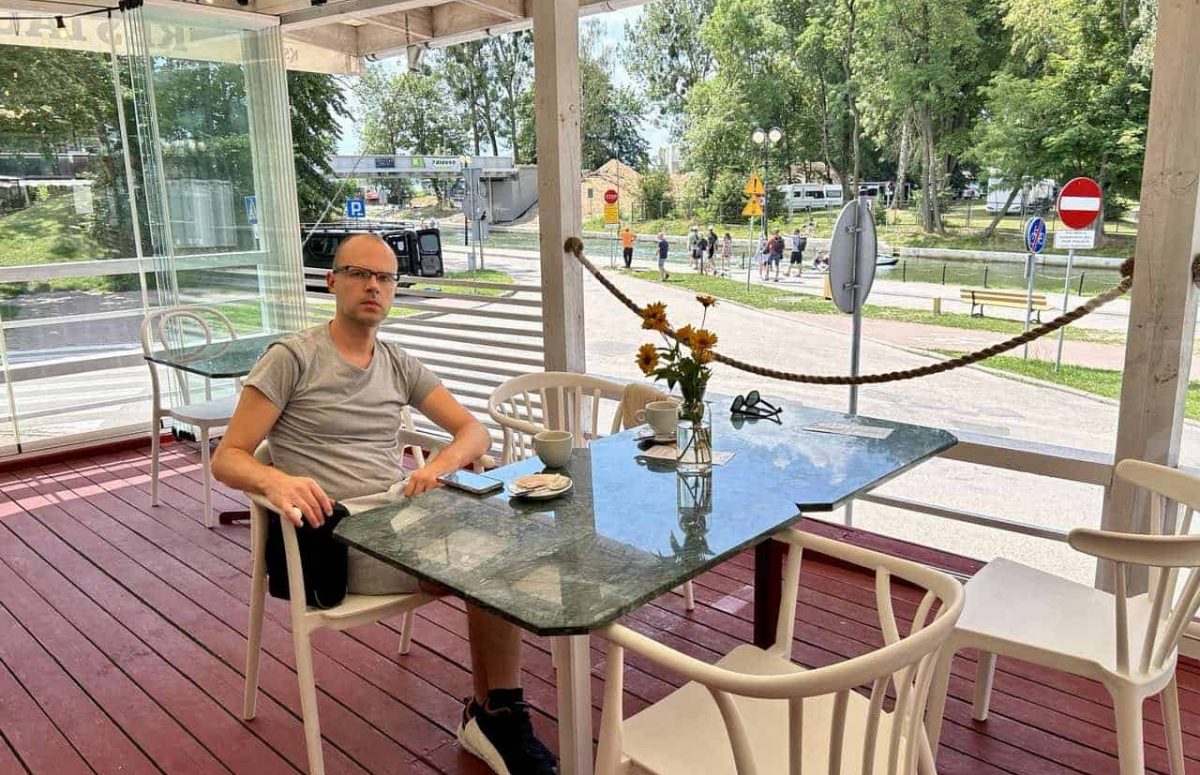
Just a short stroll from Porto, we soon stopped for a bite to eat in Restauracja GROTA. I had spaghetti with prawns. The portion was small but the dish was very tasty.
Time for a dip in Lake Niegocin
After a short nap back in the apartment, my wife and I headed to the beach again. Due to the crowds of people, it was a bit of a struggle to park ourselves anywhere on the sandy beach that was in the shade. However, we settled for a spot which we envisaged would be out of the sun some 15 minutes later with the help of some tall trees.
Only three weeks had passed since we last took a dip. That was in the Adriatic Sea in Malinska, on the Croatian island of Krk. The water in Giżycko felt much warmer.
After a few hours on the beach, we treated ourselves to burgers at Porto. We followed this up with some rest on a bench in the beach park.
It had been a long day. I believe It took me 12 seconds to fall asleep that night.
Day 2 – Sightseeing in Giżycko and back to Gdańsk via the Scenic Route
We got up at around 7 a.m. with the aim of fitting in some sightseeing before it was too hot to do anything. Fortunately, a pleasant breeze rallied itself throughout the morning to take some of the sting out of the heat.
The plan had been to drive down a road called Świętego Brunona and park up near a viewing tower and the Cross of Saint Bruno of Querfurt. I’ll write more about these sights soon. Just to say that you can catch yourself some charming panoramic views of Giżycko and Lake Niegocin from the top of the tower.
After embracing yet more cappuccinos at Porto, my wife headed off to do some souvenir shopping while I headed to Pionierska Street to observe some original pre-war buildings. Before entering Pionerska, I stumbled across a covered marketplace (Targowisko Miejskie) where traders were selling mostly clothes, flowers and other odds and ends.
I then made my way to Giżycko’s red-brick water tower to take in the views from the observation floor. To my relief, the tower had a lift.
From the water tower, I checked out some more tenement houses on Warszawska and Dąbrowskiego streets before walking through the beach park to meet my wife by the canal. We heartily tucked into some fish and chips at Porto before heading to the Boyen Fortress. This was our last port of call in Giżycko before driving back to Gdańsk.
I’d had enough of crowded roads so we headed back to Gdańsk another way via the towns of Kętrzyn, Bartoszyce and Górowo Iławeckie, and many villages in between. This particular route leads to the main E28 just a few kilometres away from the Kaliningrad Oblast. All in all, it was a very stress-free drive and it might even be quicker than the route via the S16 near Olsztyn. However, this will all change in the future as a motorway is being built which will link Olsztyn with the Masurian Lake District and Białystok.
Top Things to See and Do in Giżycko
Here are the best things to see and do in Giżycko from my own personal experience:
1. Stroll by the Łuczański Canal and drink coffee whilst watching the world go by
At a length of 2130 metres, Łuczański Canal is the third longest Masurian canal. Its banks were concreted during the only renovation since World War II in the 1950s.
As I’ve already stated, there’s something very soothing about spending time by the Łuczański Canal. This is mostly due to a combination of the greenery on the west side of the canal, small boats cruising between lakes Niegocin and Kisajno, and charming eateries and taverns scattered along Nadbrzeżna Street. Further upstream, there is the eye-catching backdrop of the Teutonic Castle of Giżycko (now Hotel St. Bruno) and Giżycko Swing Bridge – a real draw for tourists.
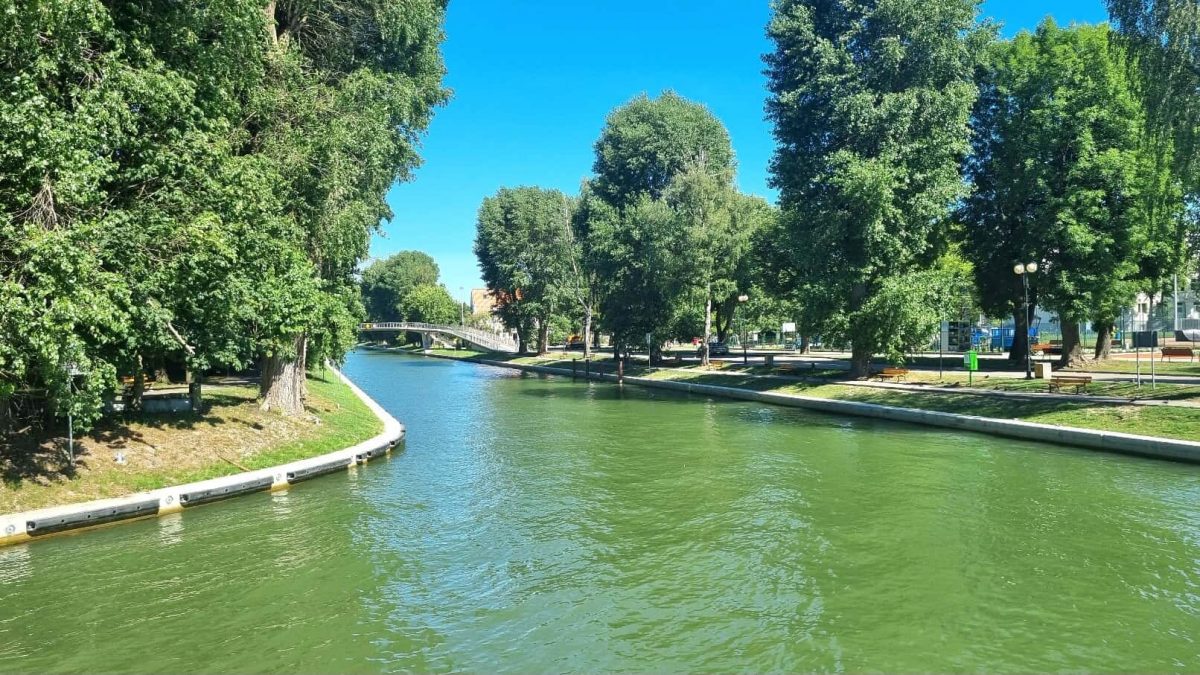
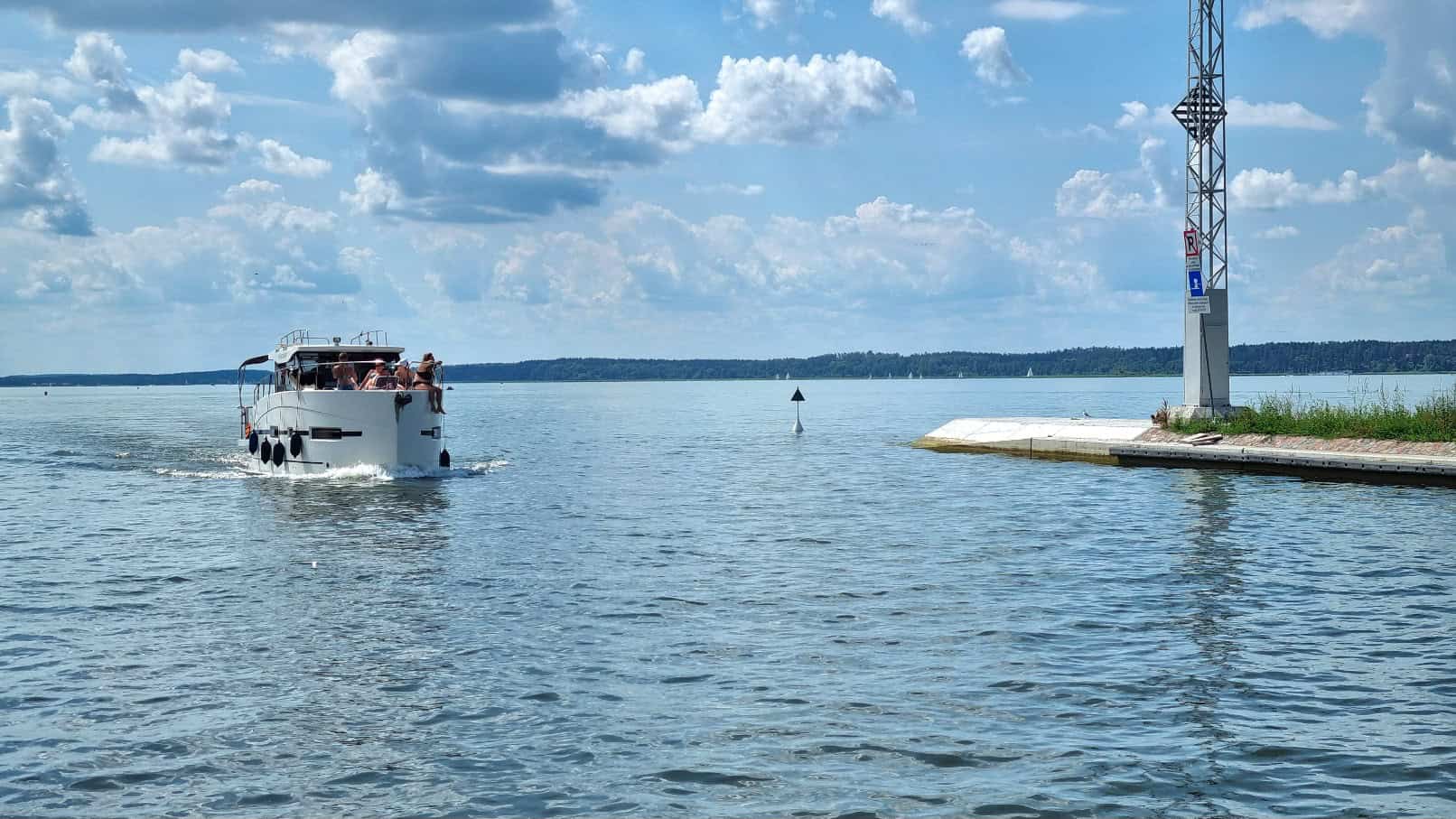
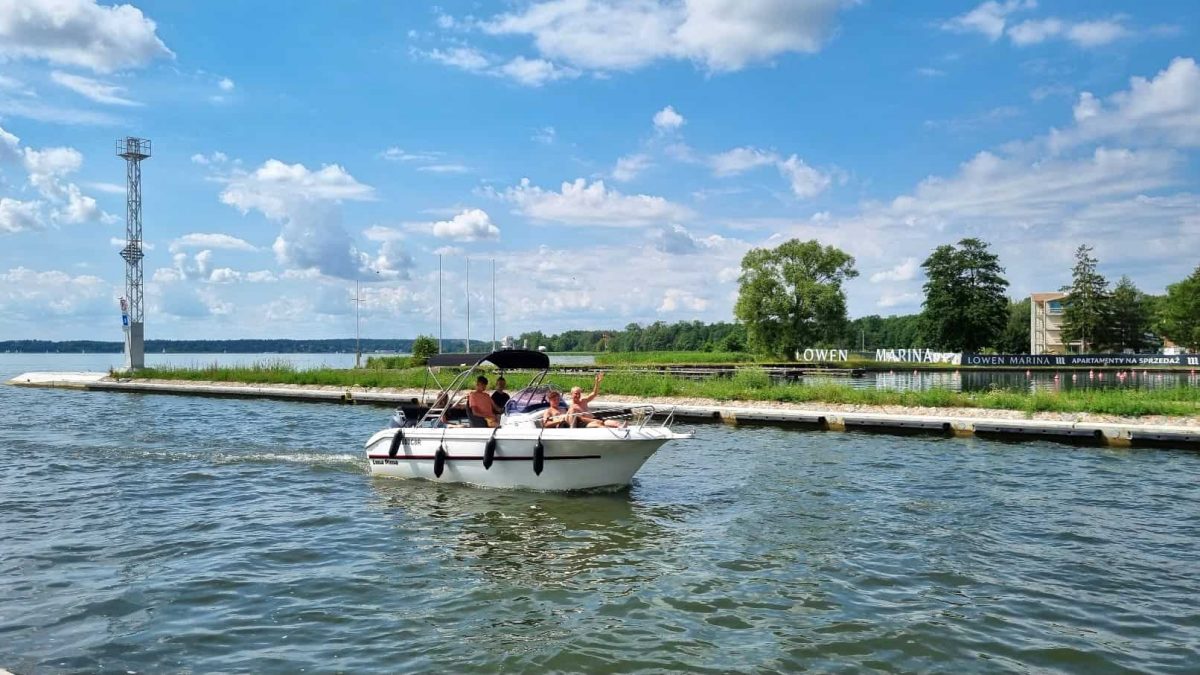
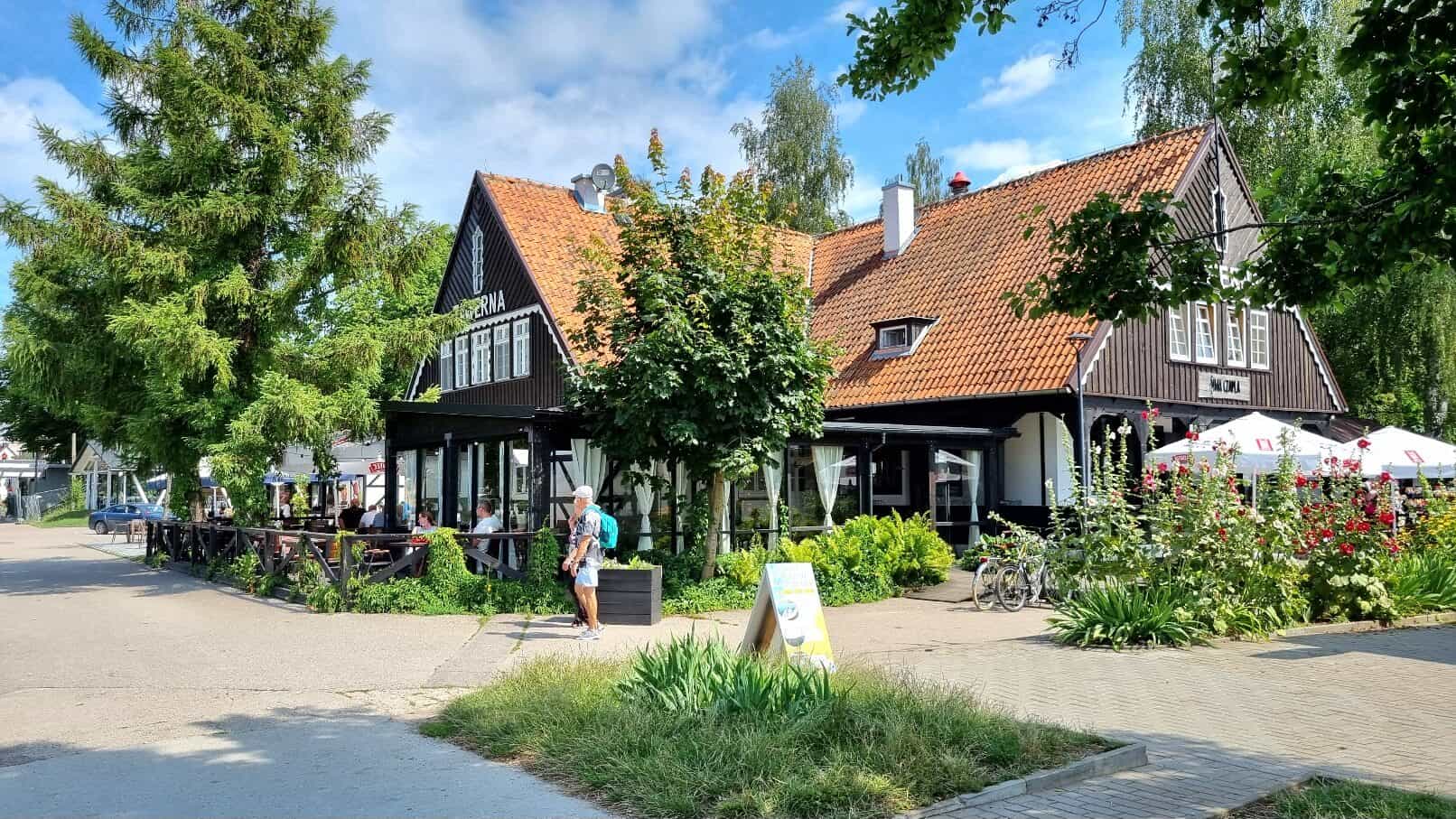
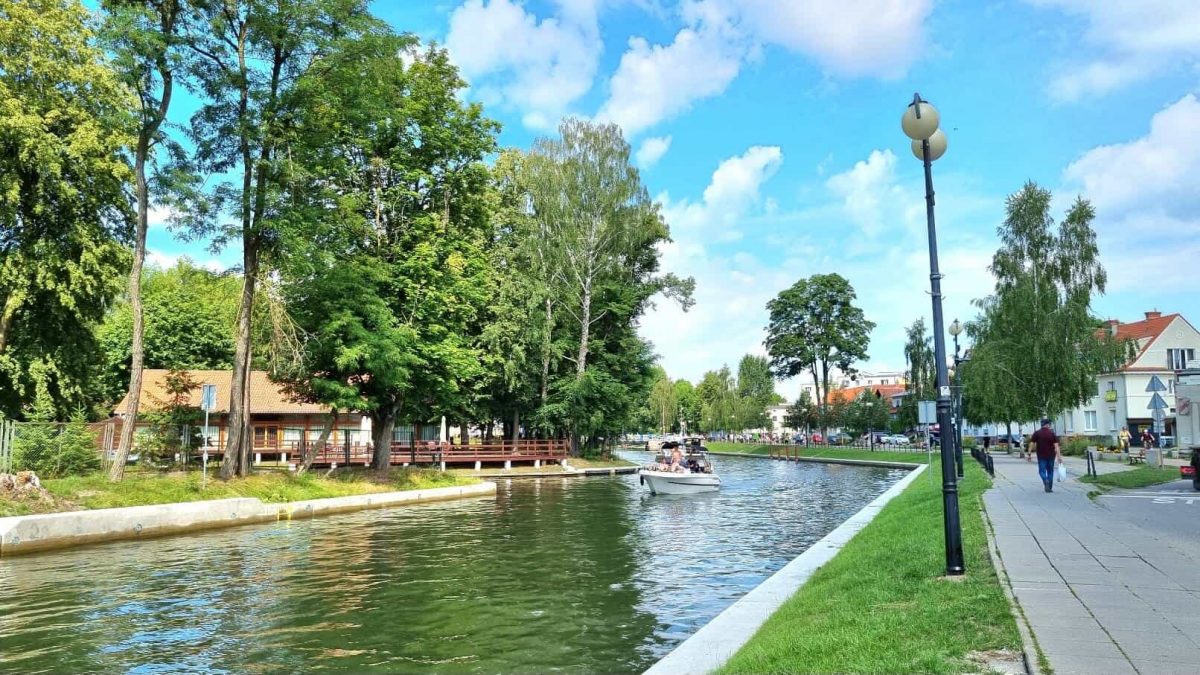
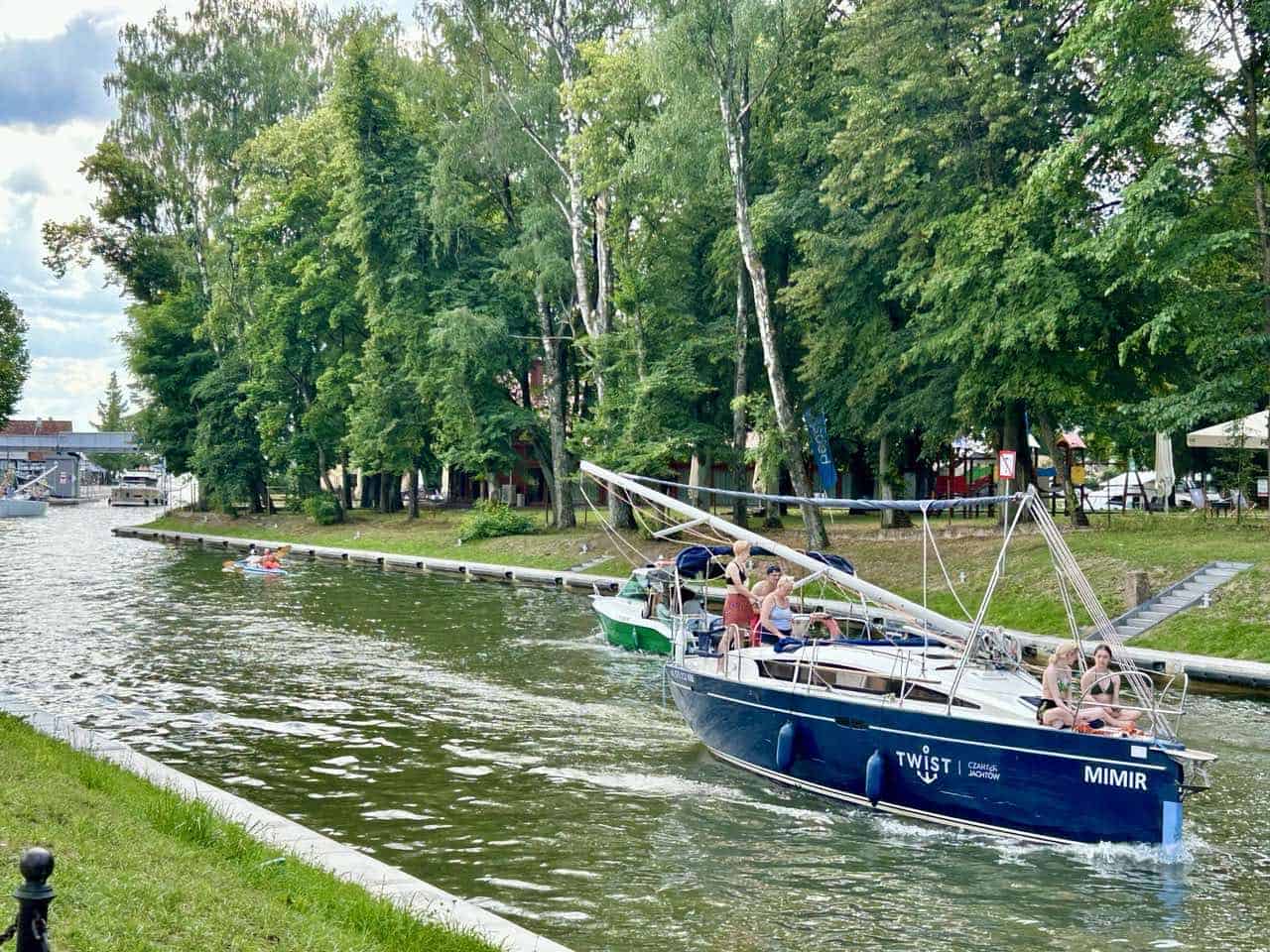
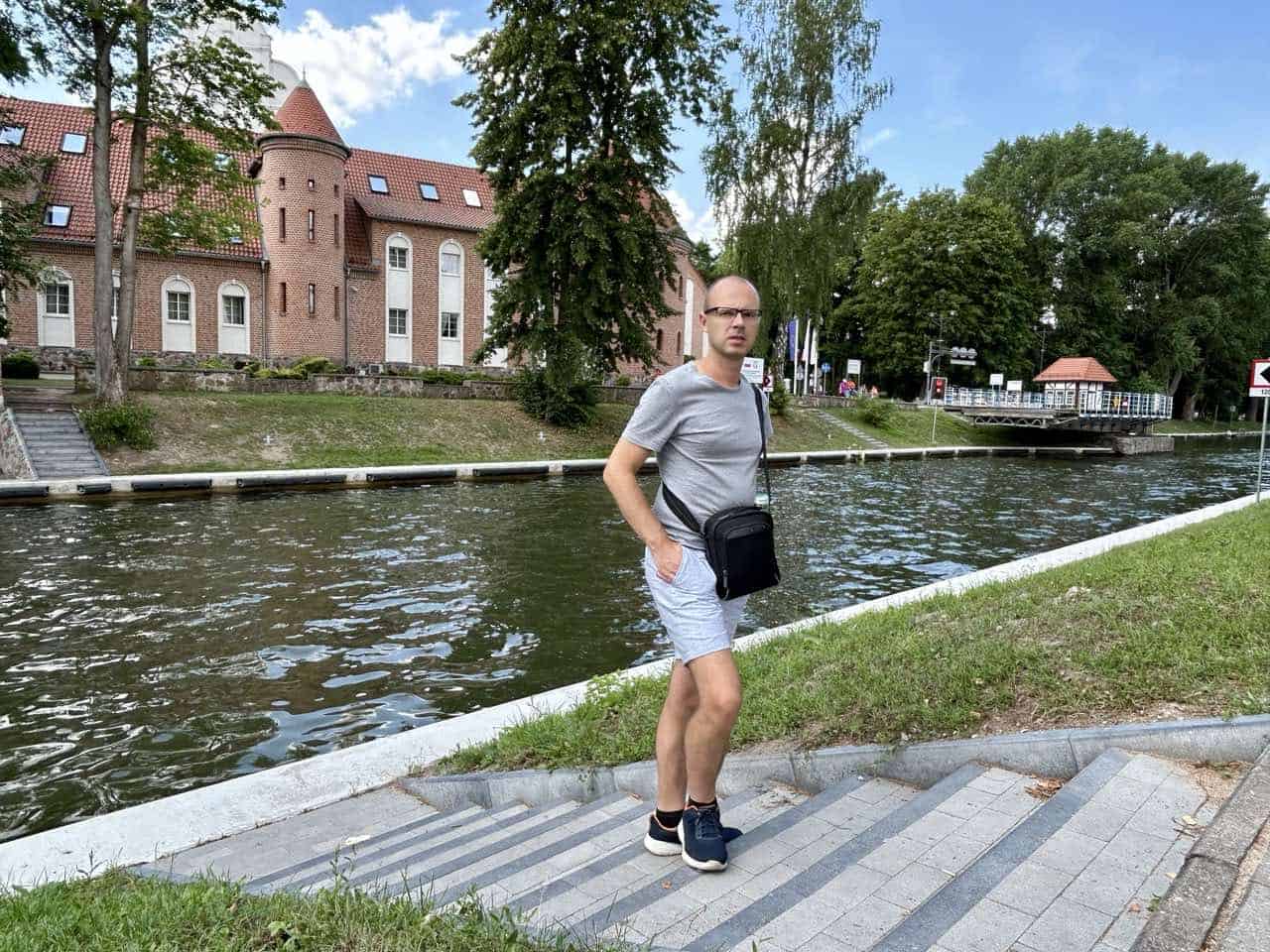
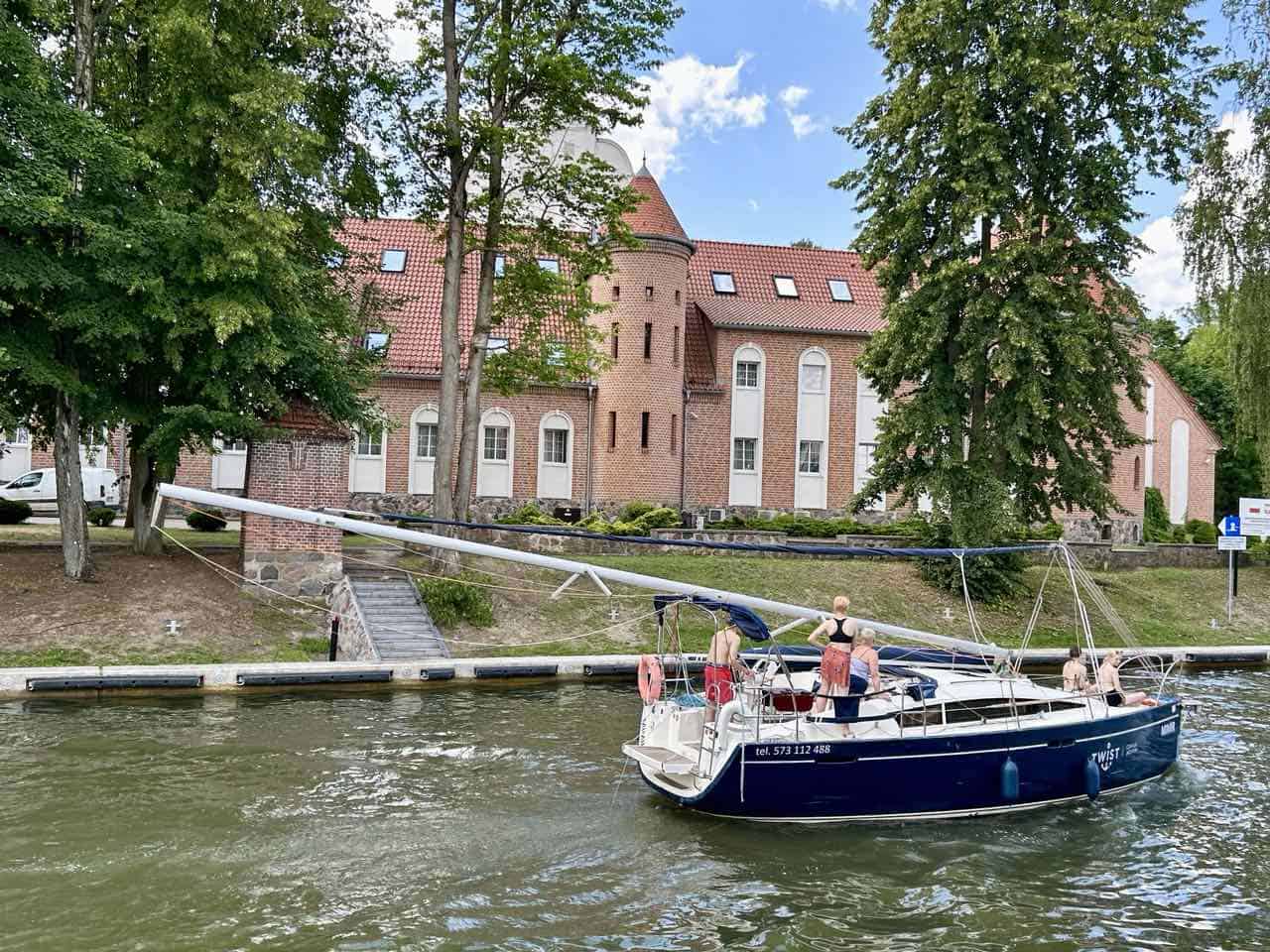
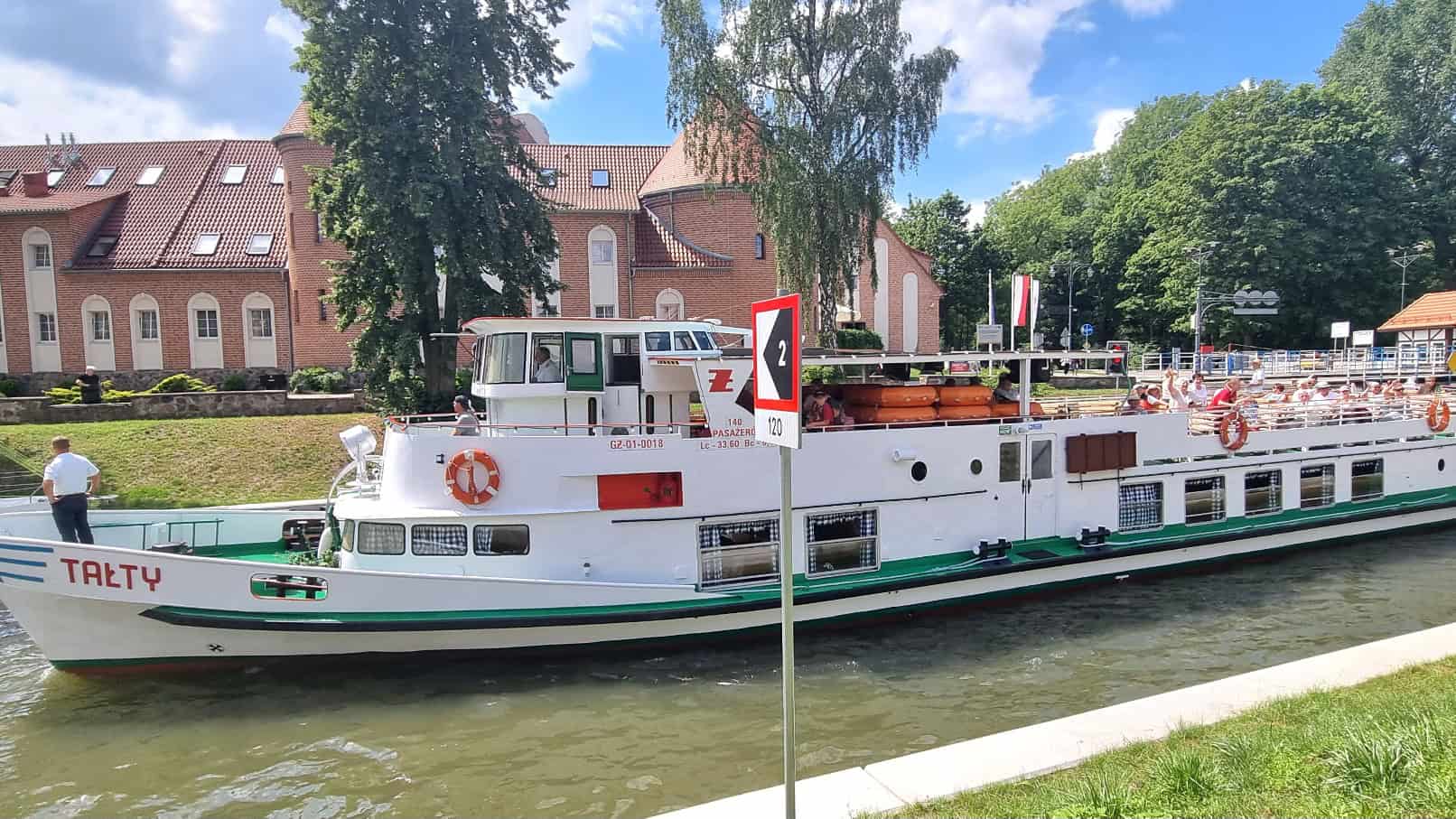
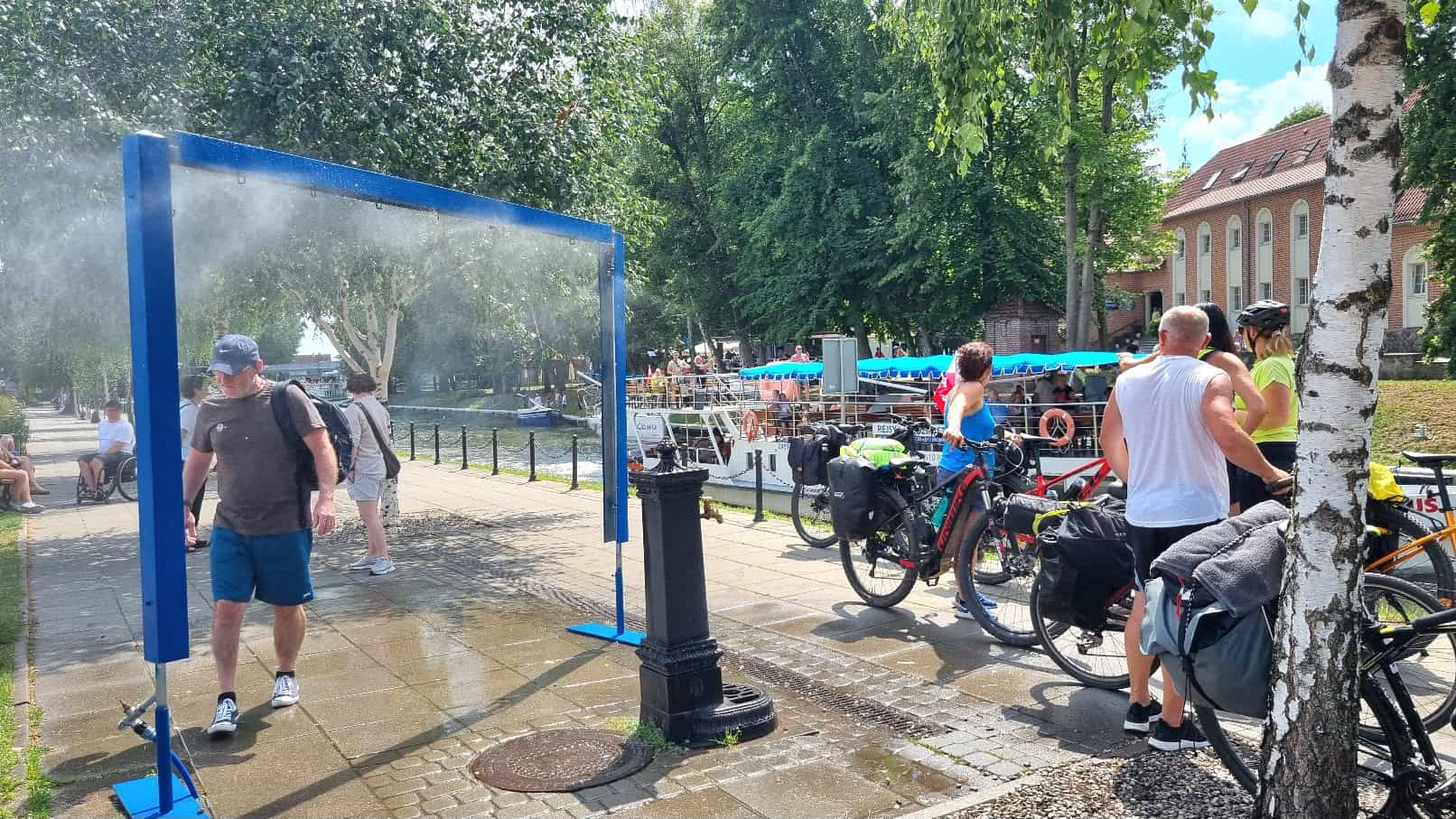
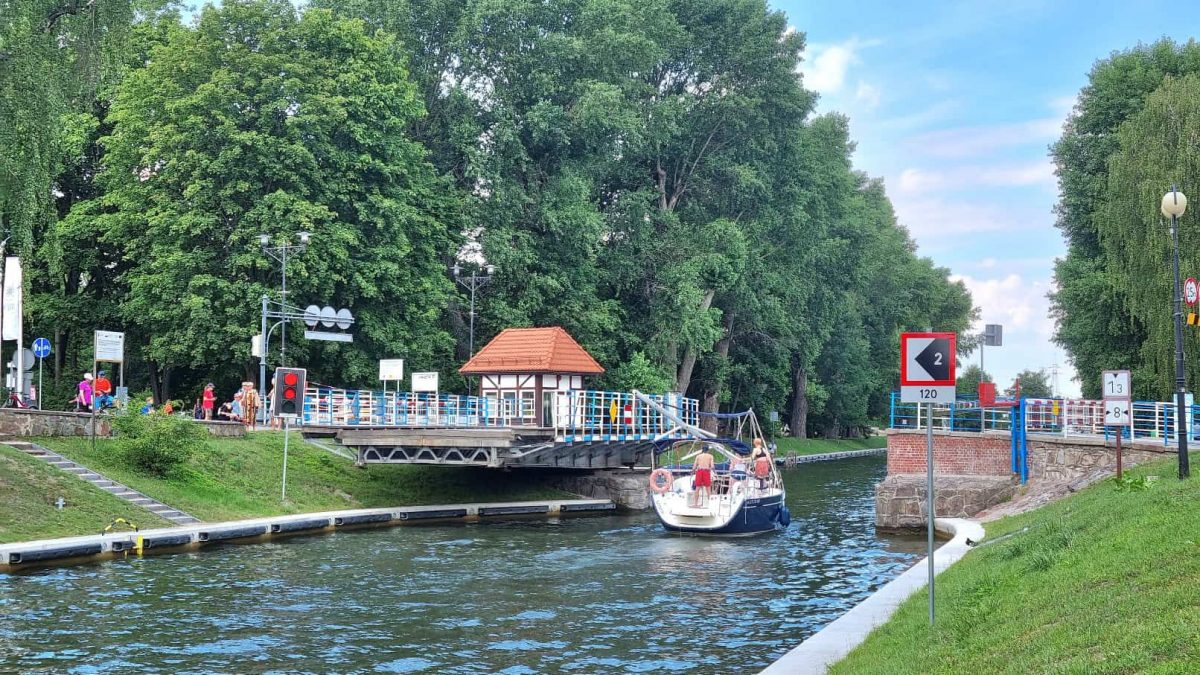
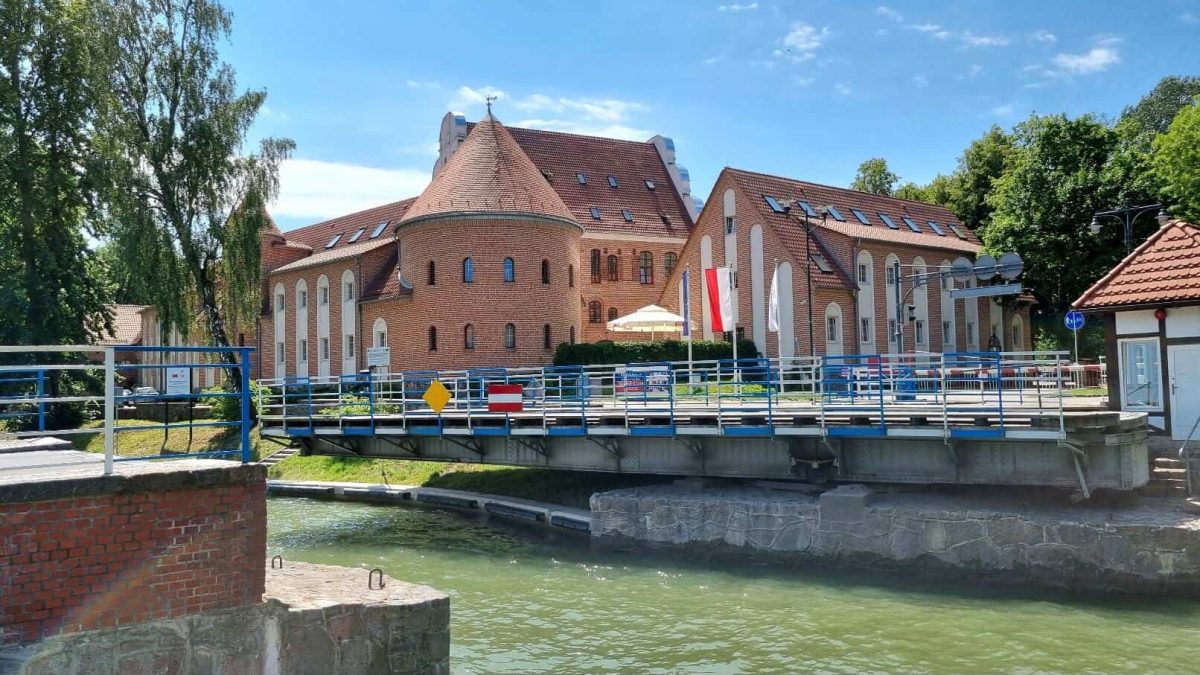
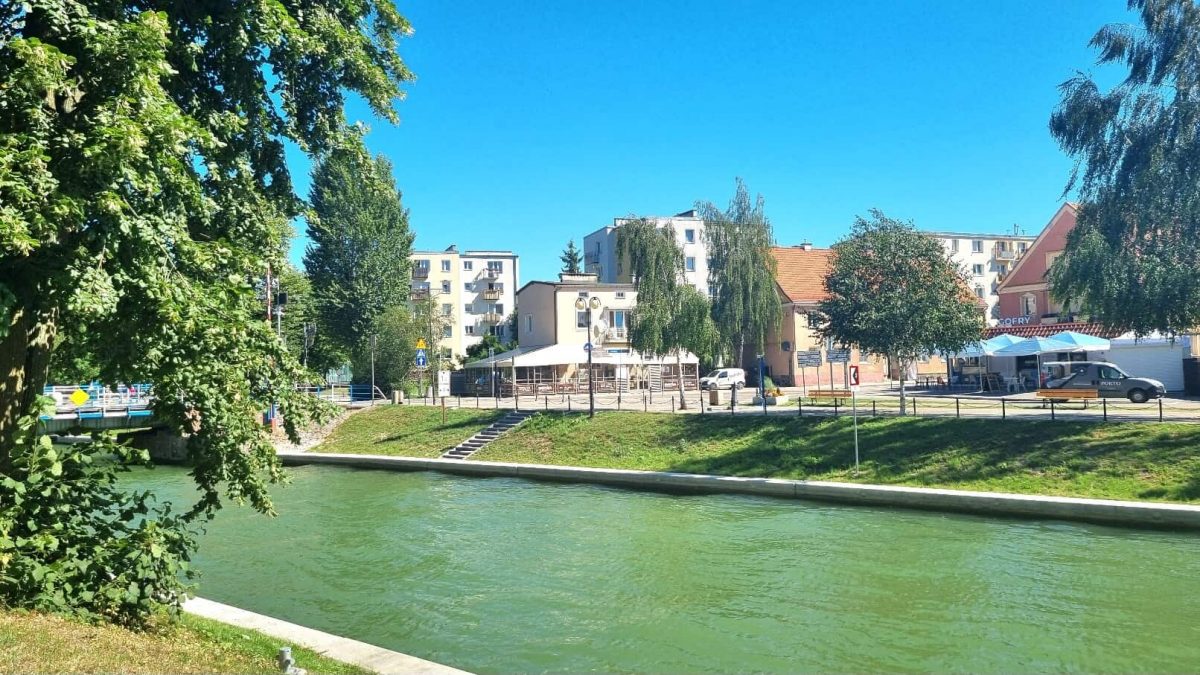
Some 200 metres away from the swing bridge is an architectural masterpiece – the Footbridge above the Łuczański Canal (Kładka nad Kanałem Łuczańskim). Here’s the view:
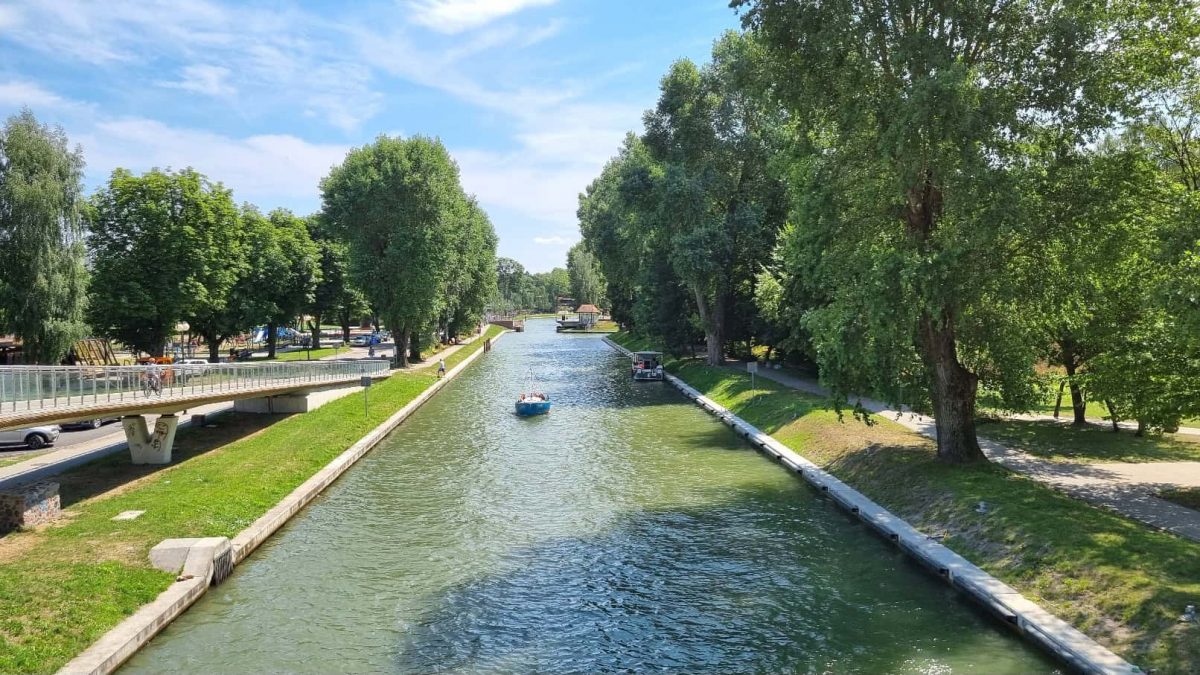
2. Sit in the Beach Park just behind the Town Beach
As I wrote about in my report of my first day in Giżycko, there’s something very calming about sitting on a bench and watching the world go by in the beach park right behind the main beach (Plaża miejska). It’s equally as calming to watch sailboats doing their thing in the distance on Lake Niegocin.
In the beach park, there are plenty of benches, a popular restaurant (Przystań) in the centre of the park, a few ice cream shops, volleyball courts and playground equipment for kids.
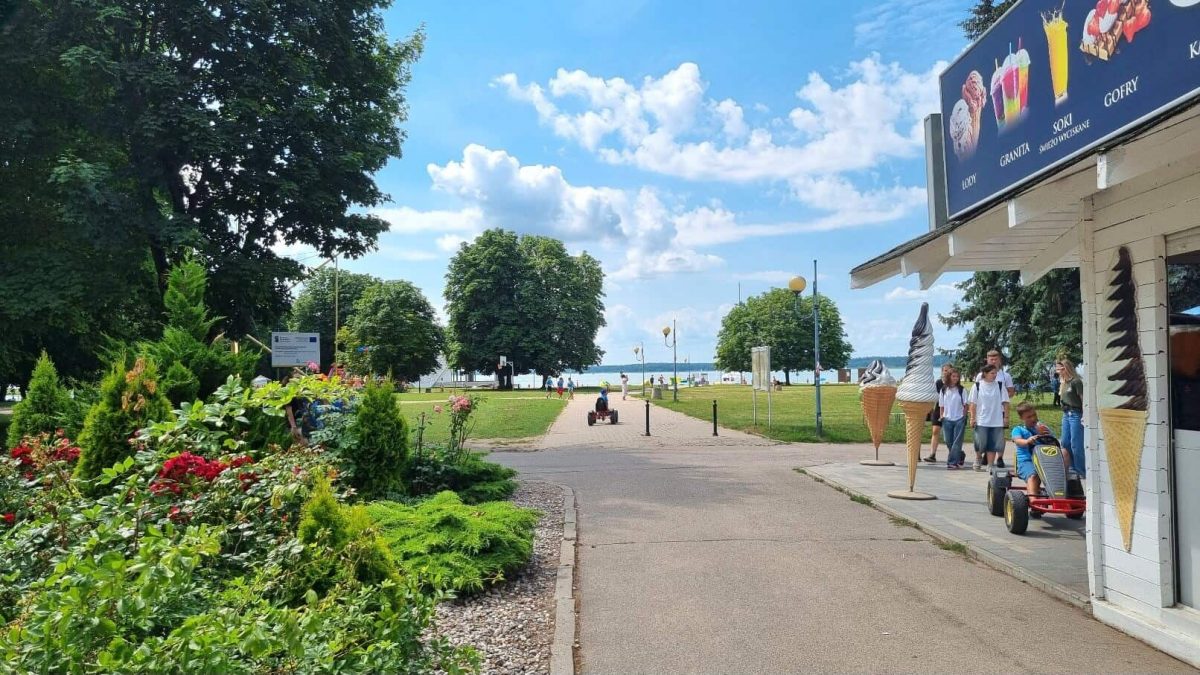

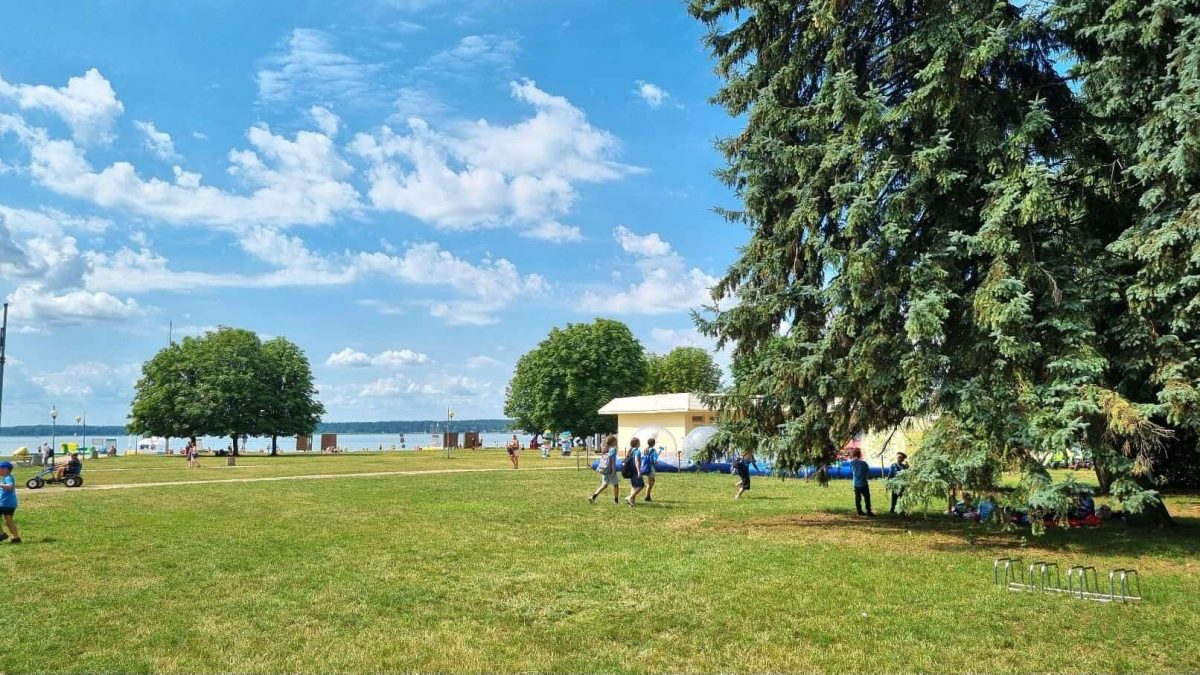
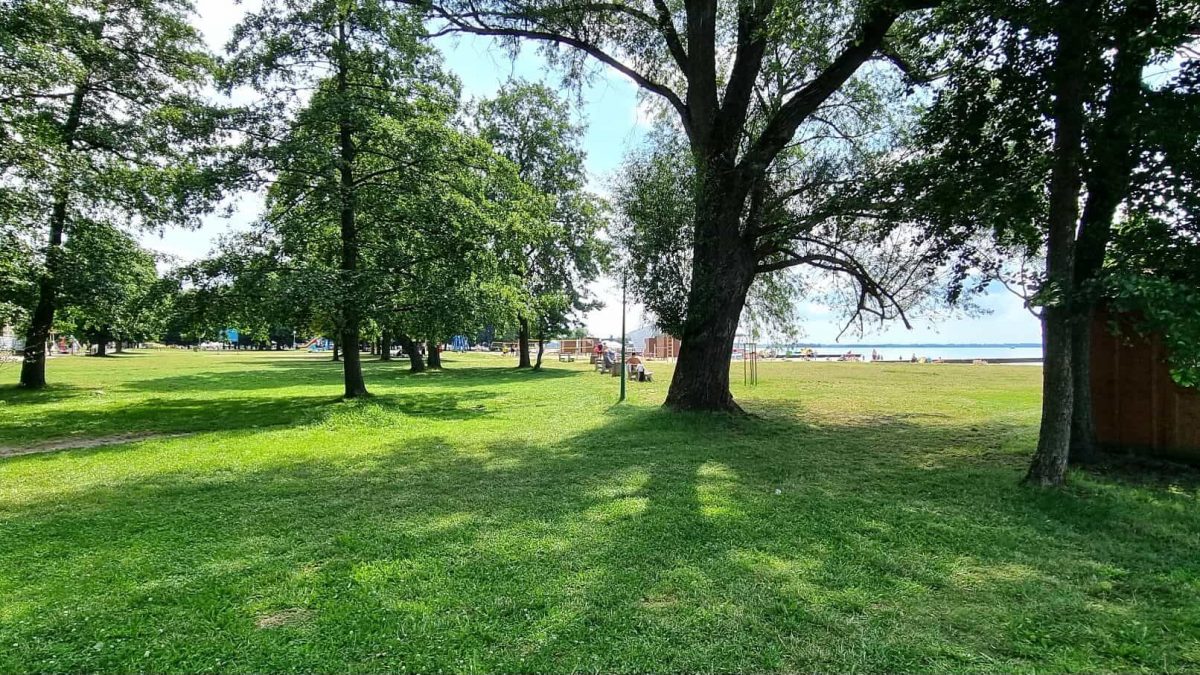
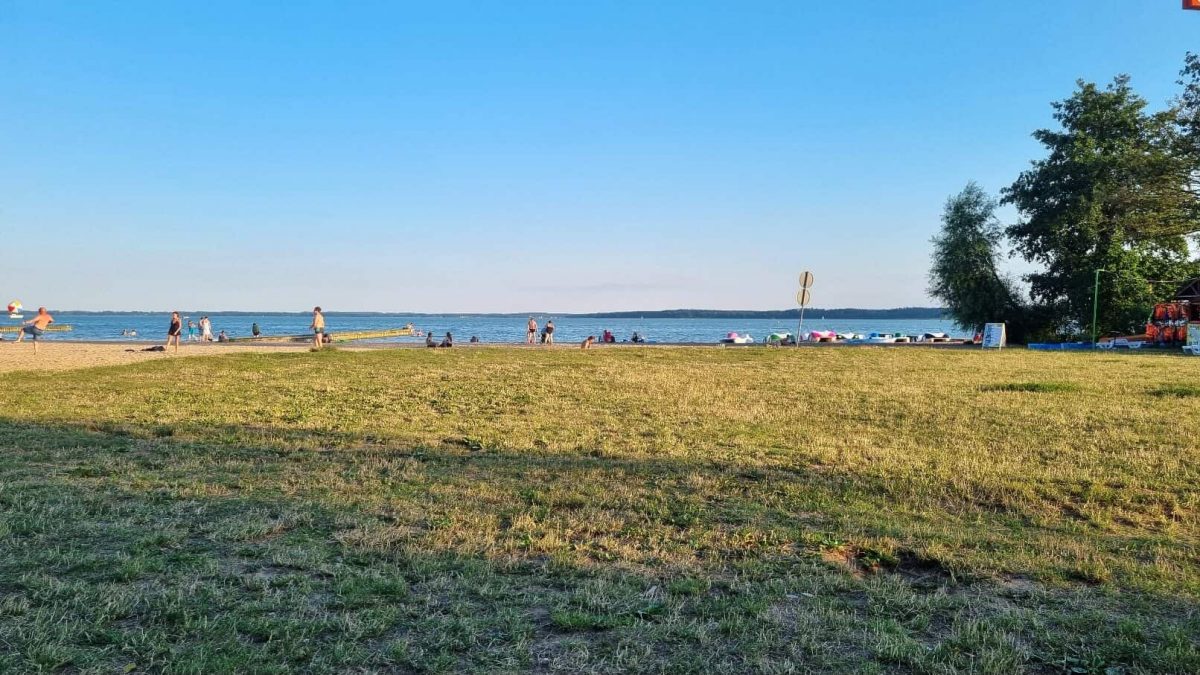
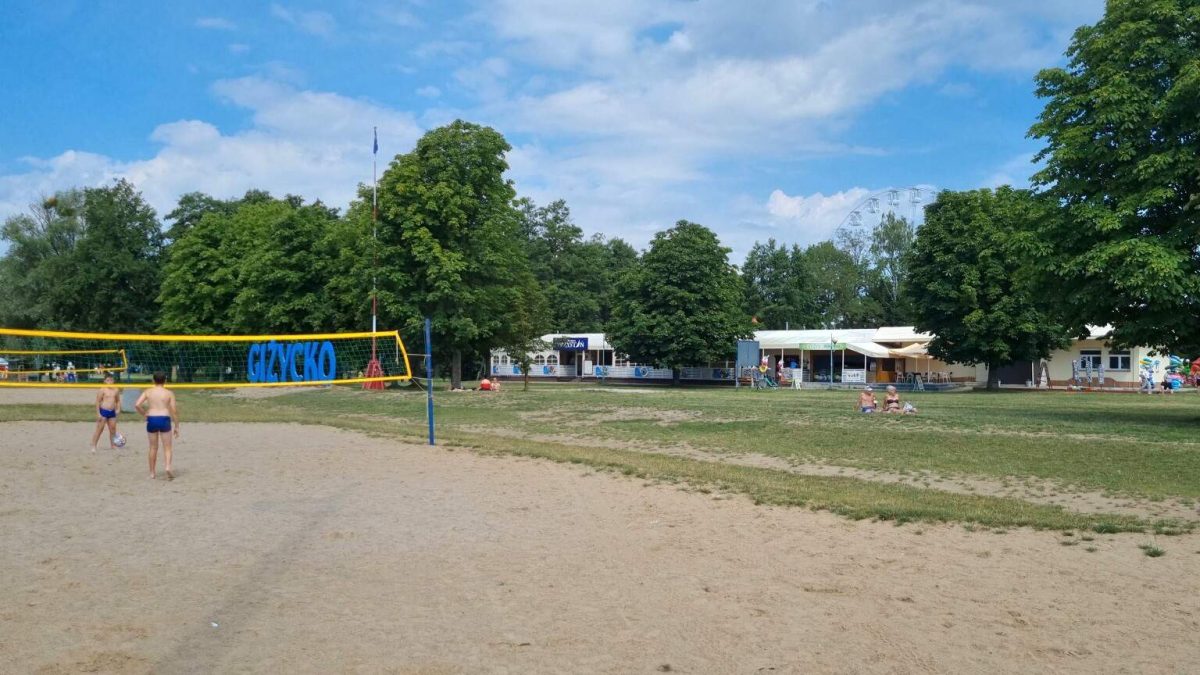
3. Take a dip in Lake Niegocin
In the summer, why not take a dip in Lake Niegocin? The water is warm and the water quality is apparently excellent.
When you’re done with swimming and splashing around in the lake, why not do some sunbathing on the beach? The beach is fairly expansive so there’s plenty of space to accommodate local residents and tourists in the summer months.
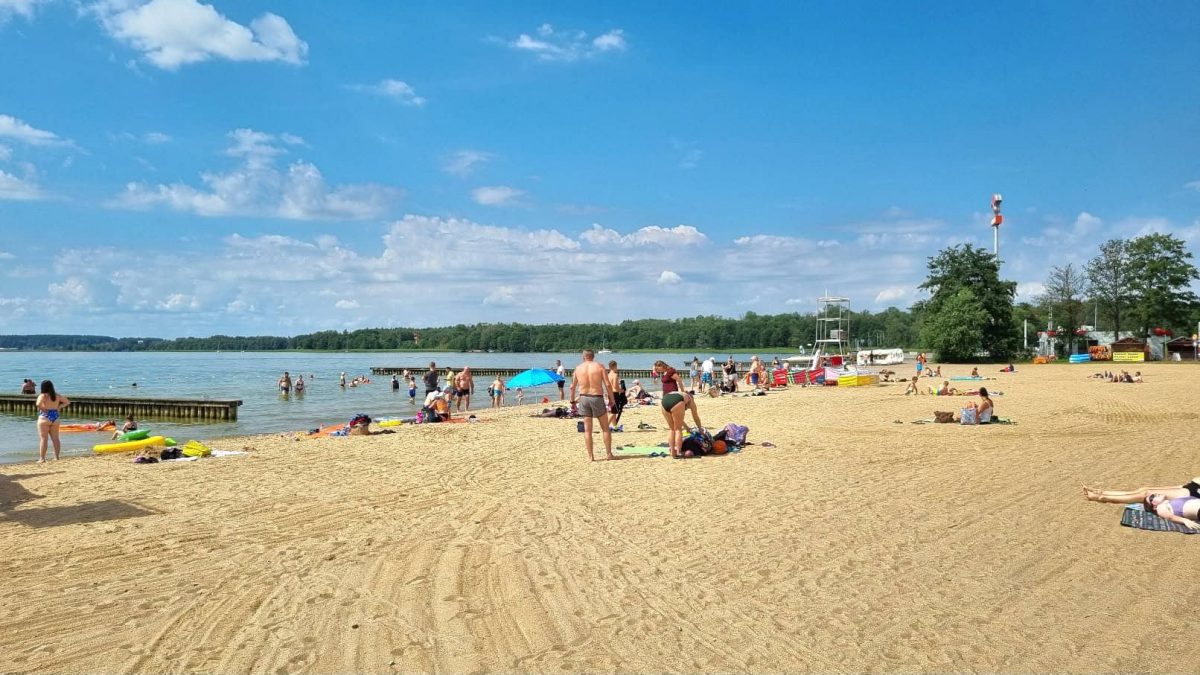
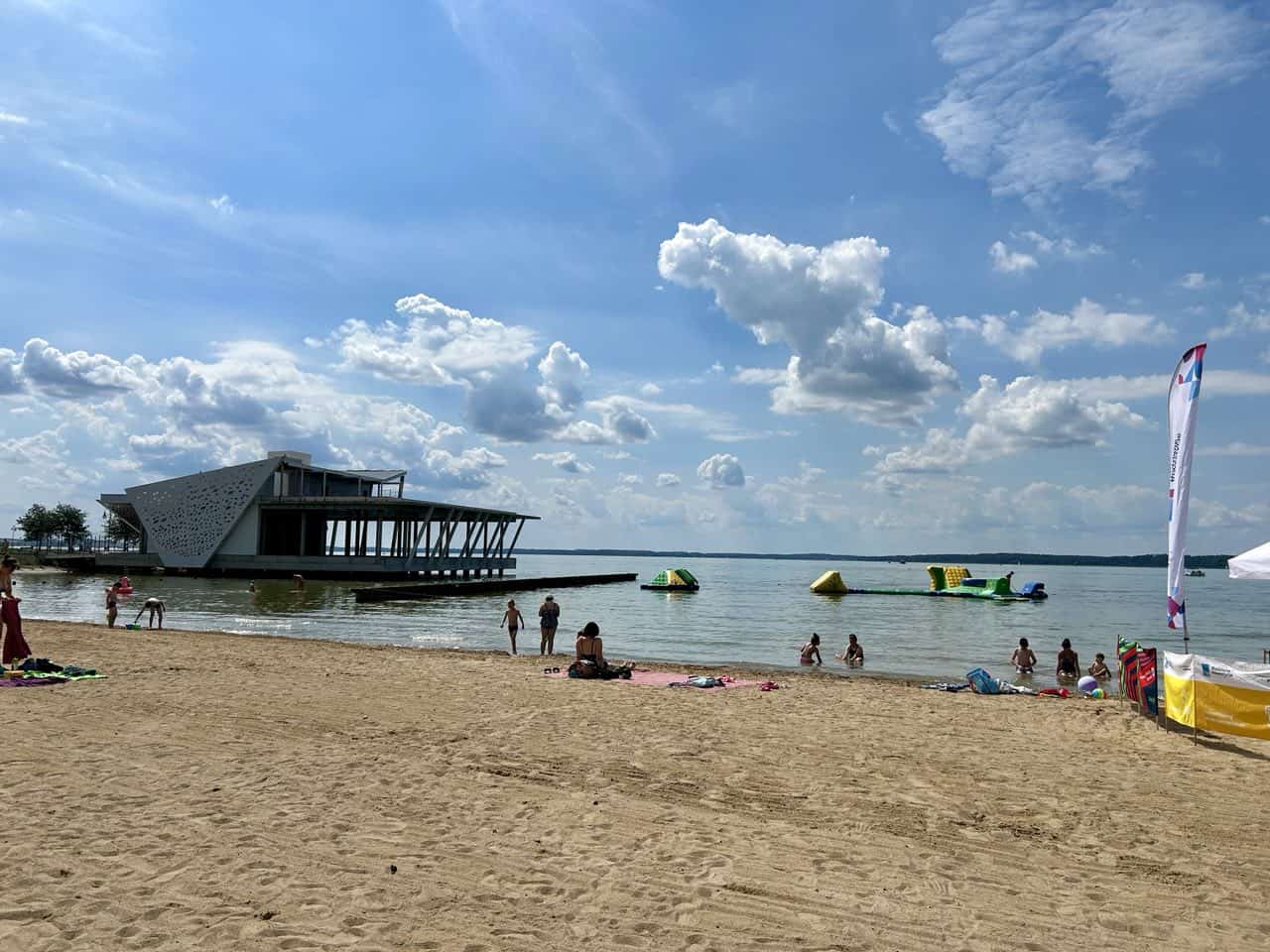
4. Take a walk along the jetty at the end of Łuczański Canal
At the point where Łuczański Canal runs into Lake Niegocin, there is a short jetty which offers splendid views across the lake.
It’s just a jetty but you can sit down here on a bench and take in the views across the lake. There are photo opportunities galore.
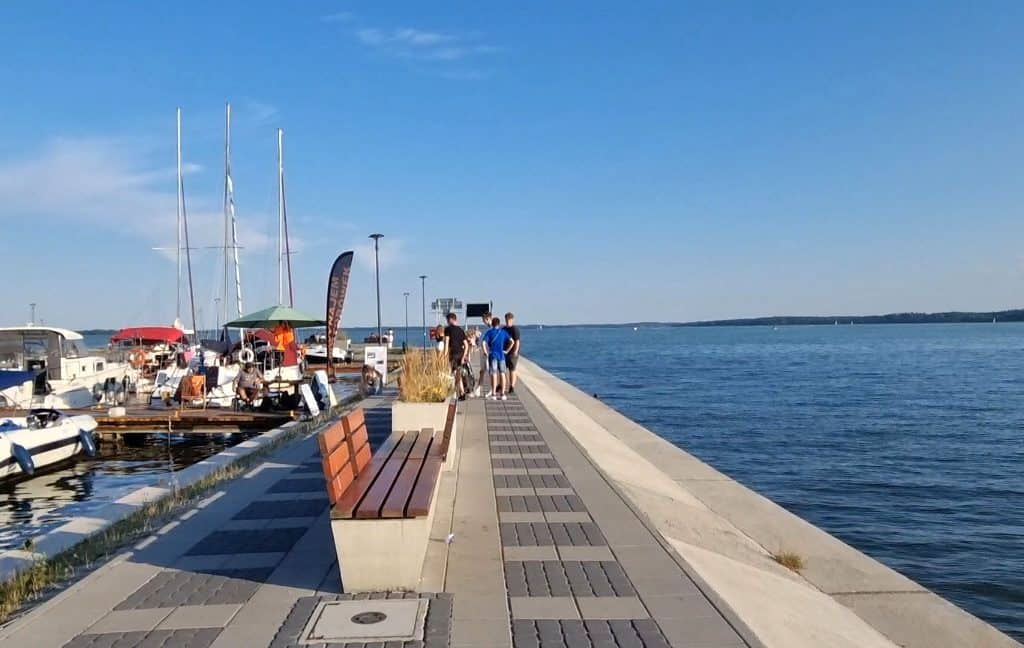
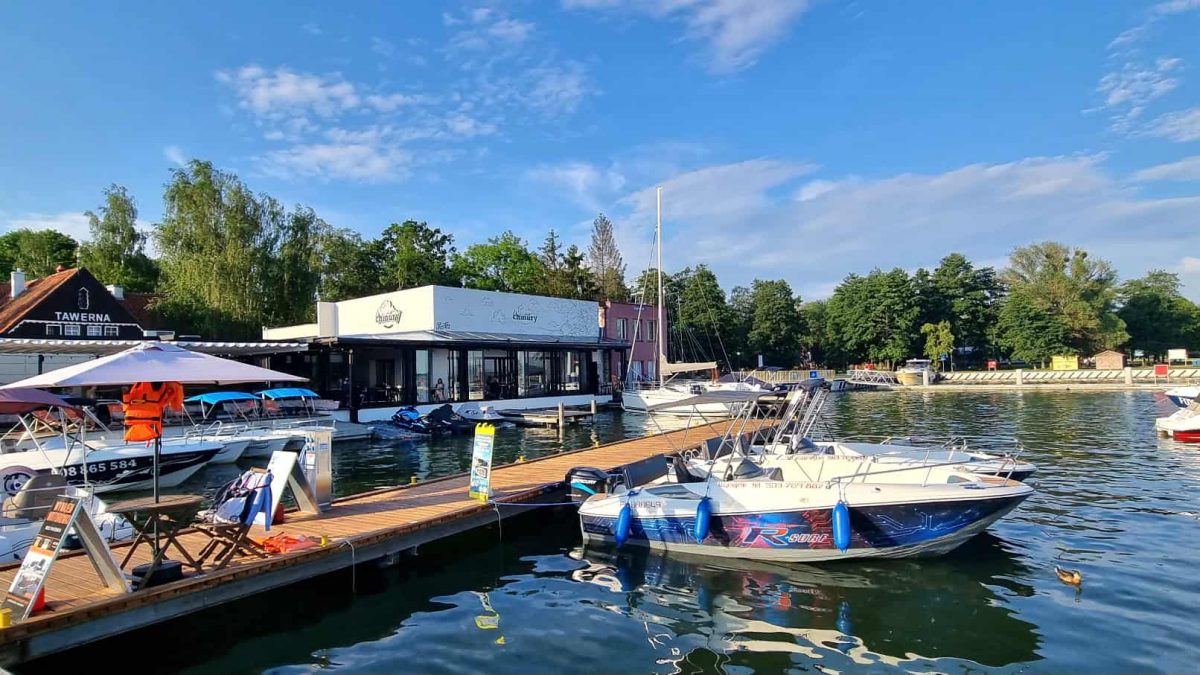
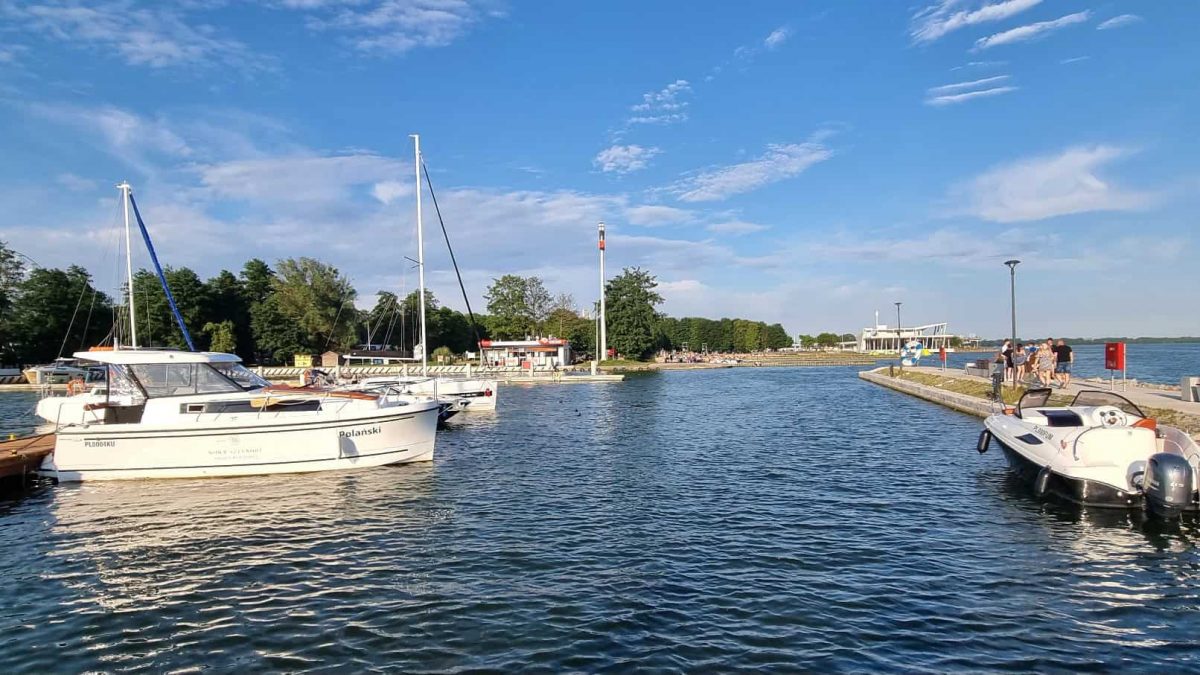
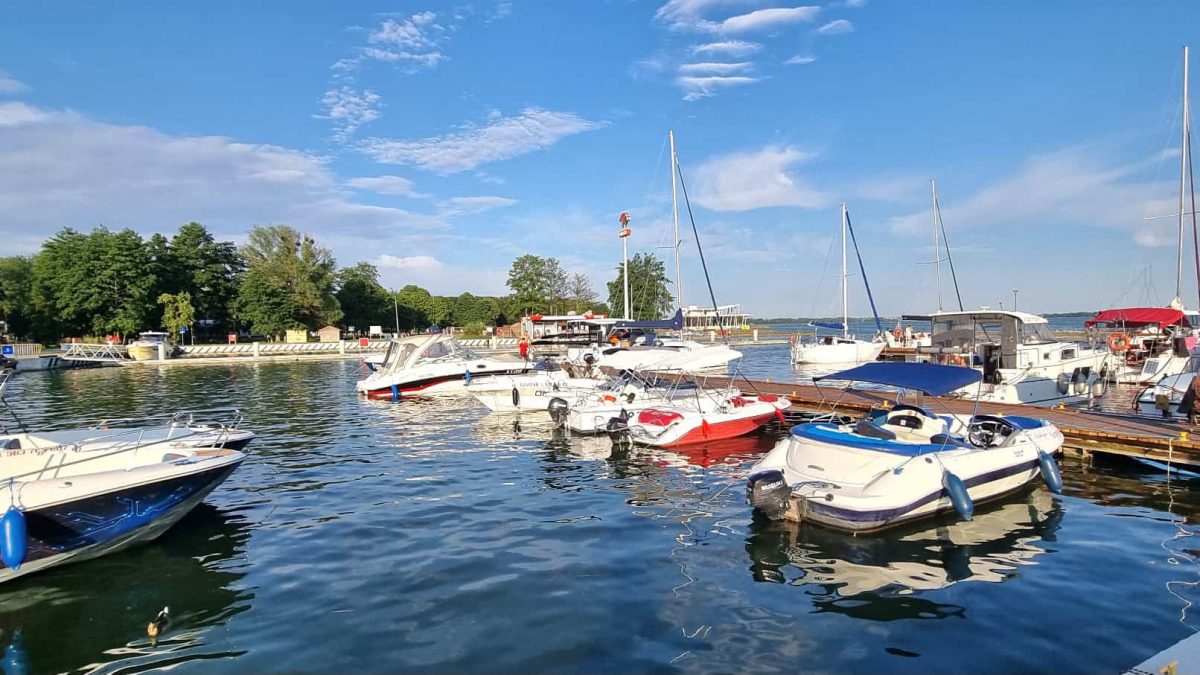
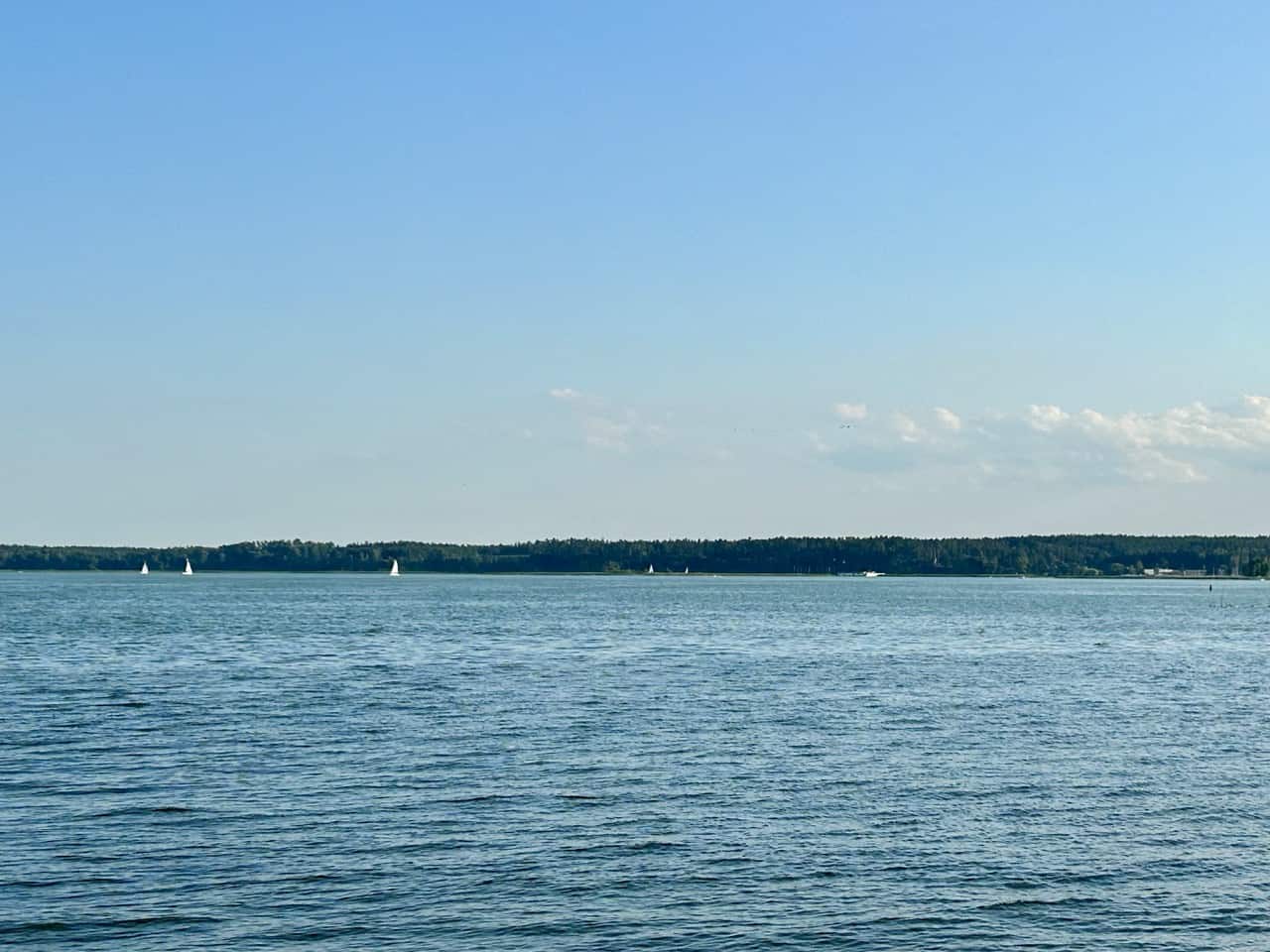

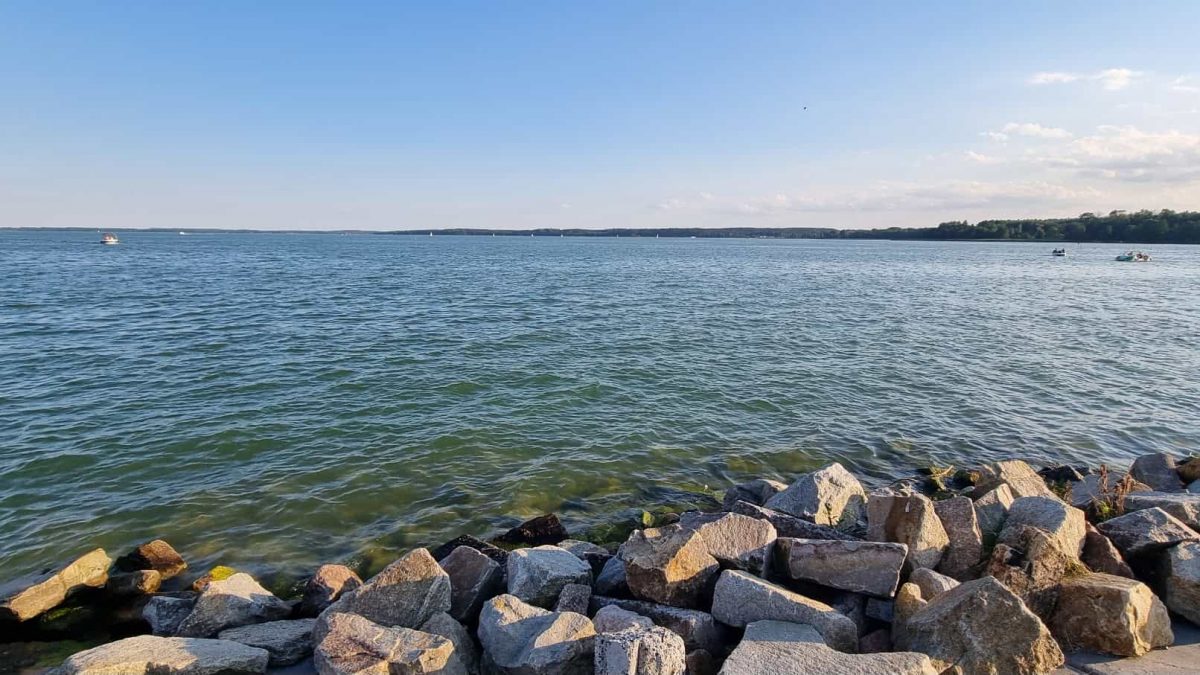
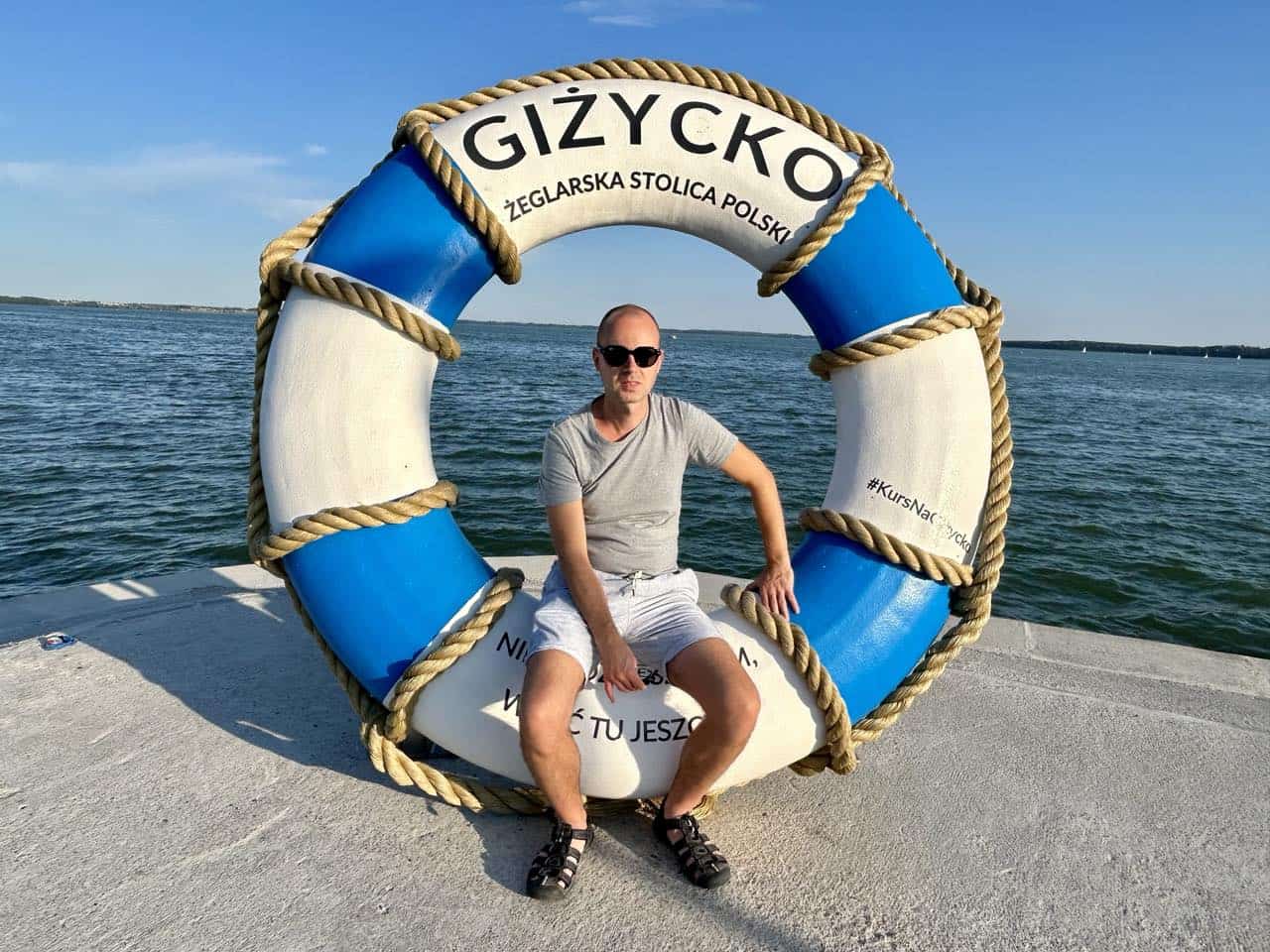
5. Visit Giżycko Water Tower
Giżycko Water Tower was erected in 1900. It supplied running water to the town for the following 96 years, until 1996, when the waterworks system was constructed.
After the water tower was decommissioned in 1997, it became the property of local entrepreneur Henryk Górny. Górny swiftly sought to transform the tower into a unique tourist attraction. Therefore, a viewing deck was added to the dome. The viewing platform can be reached either via 129 steps or a lift. In fact, the lift goes up to the fifth floor and visitors need to climb up the stairs of the remaining two floors. I personally recommend using the lift on the way up and ascending via the stairs. Besides, I visited on a hot day so I didn’t fancy climbing up the stairs. Nevertheless, I have read reviews that the climb from the ground floor up to the top is not demanding.
As you descend, you can explore each floor as there are plenty of local historic photographs and documents which belonged to former residents of the town. There are also exhibitions related to the Polish People’s Republic, art, hunting and other key Polish military events.
On the floor directly beneath the terrace, there is a café which serves coffee, cold drinks and local cakes, such as cheesecake. On the top floor, there is a large room in which visitors can enjoy their drinks and cake. Several open doors lead out to the outdoor terrace which offers 360° views of Giżycko, Lake Niegocin and the surrounding area with all the woods and forests.
Souvenirs are sold in a small shop on the ground floor.
Location
The Water Tower is located near the town centre at Warszawska Street 37.
Opening hours
May: 10-18, June: 10-20, July: 10-22, August: 10-22, September: 10-18
Prices
Residents – 10 zł
Adults – 20 zł
Pensioners – 15 zł
Pupils and students – 10 zł
Groups of 10 or more people – 15 zł (per person)
School trips (10:00 – 16:00) – 10 zł (per person)
Children under seven years old – FREE
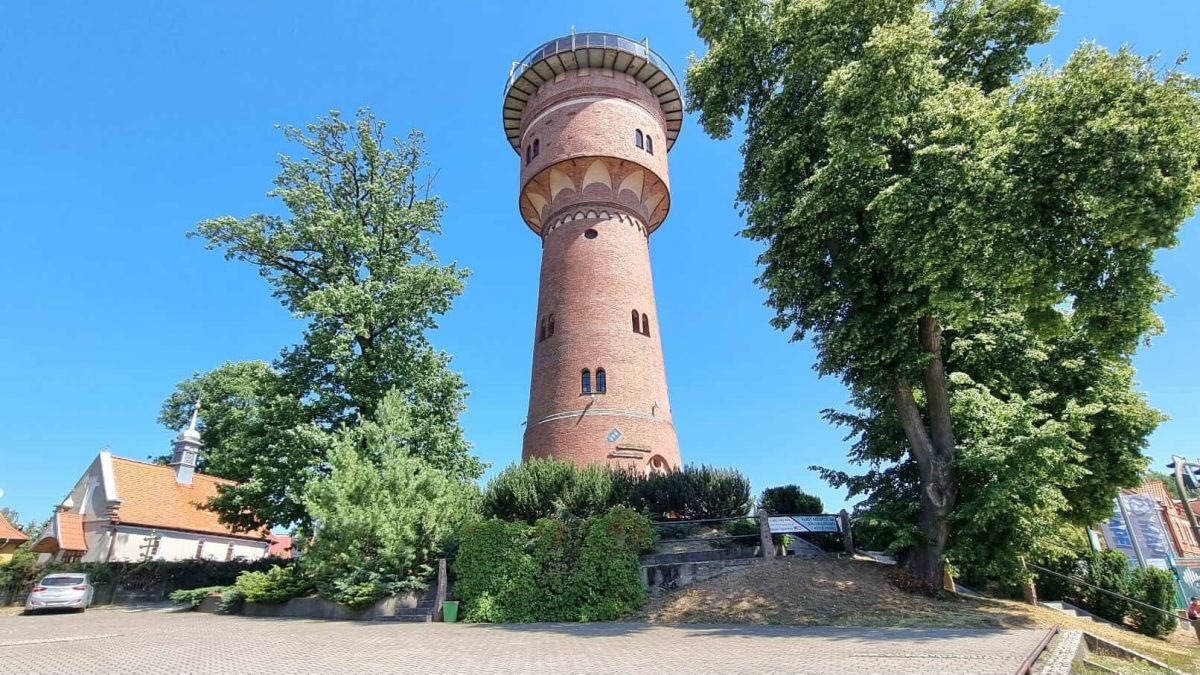
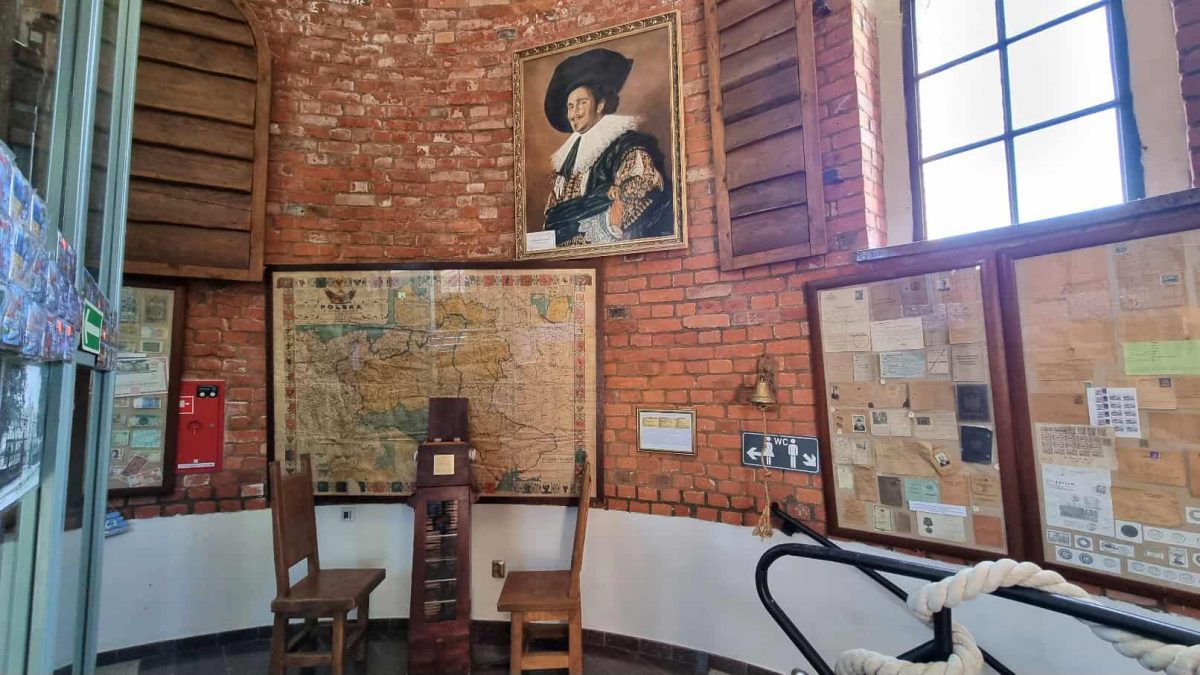
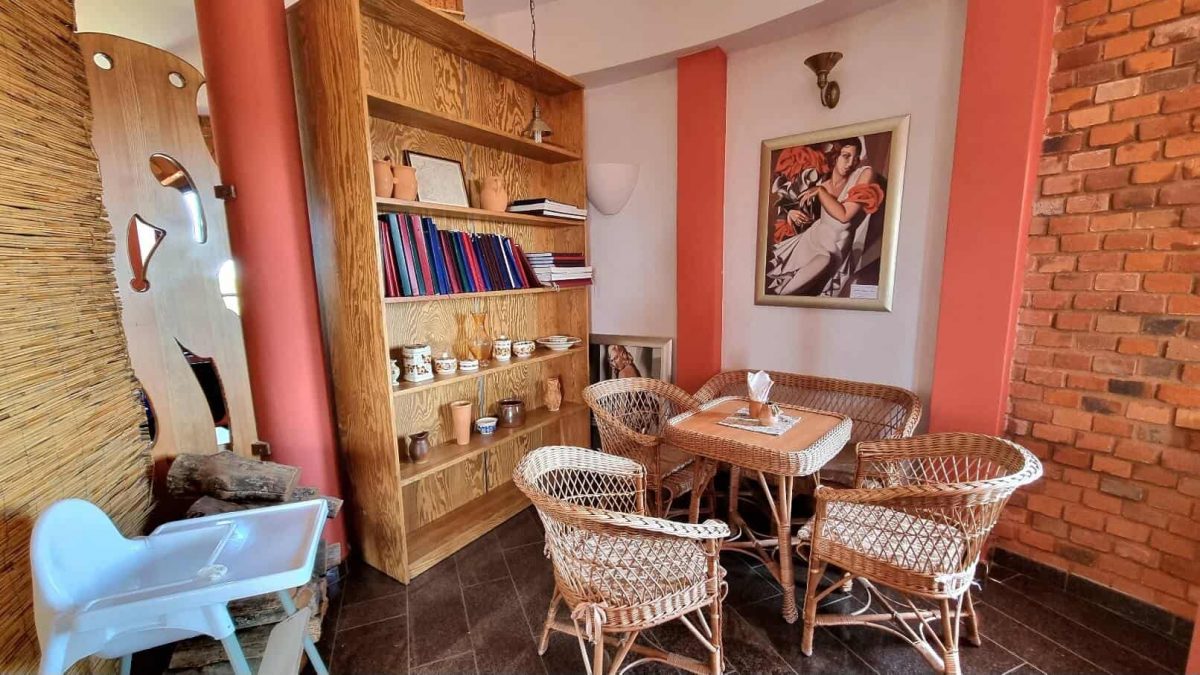
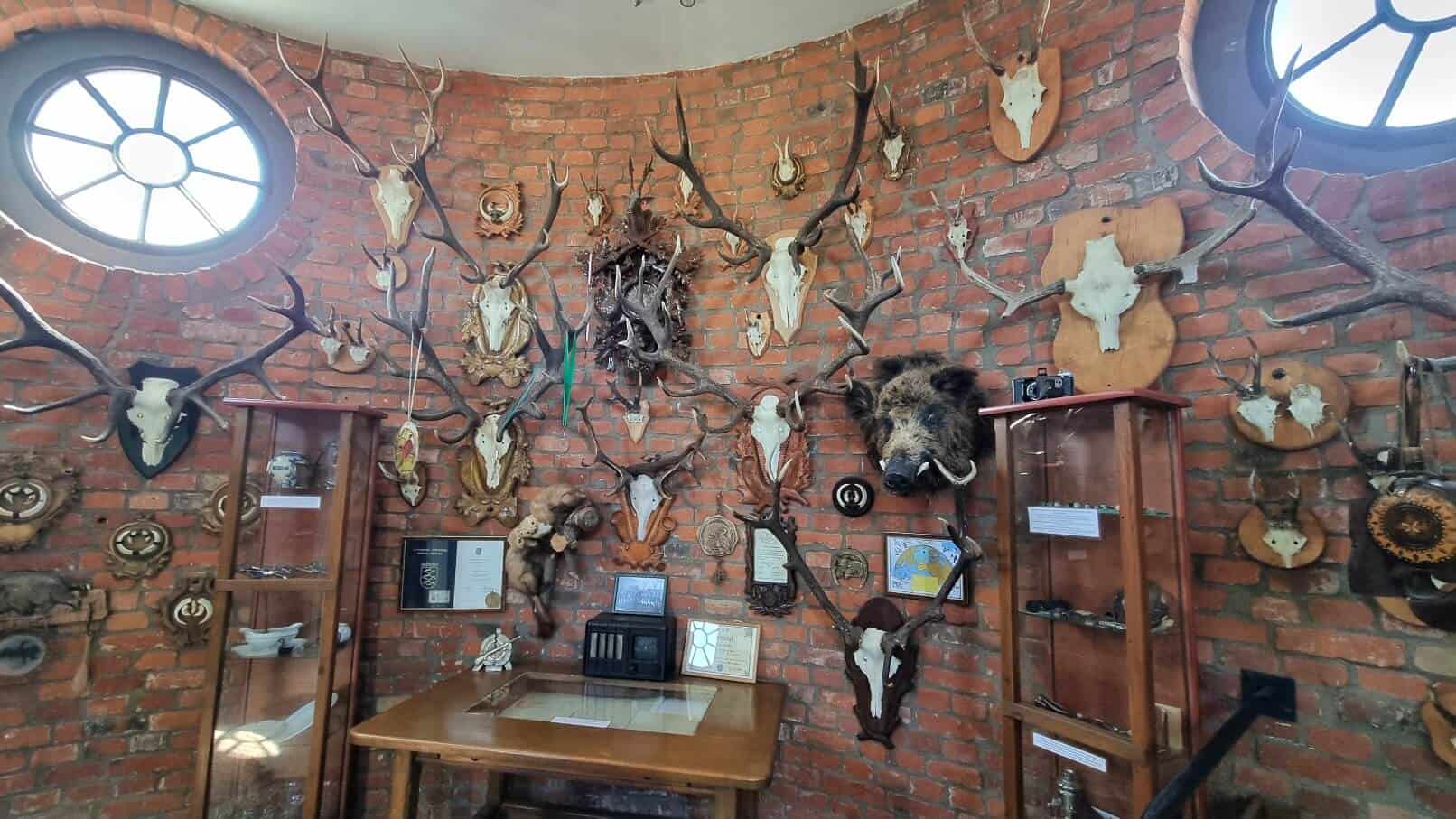
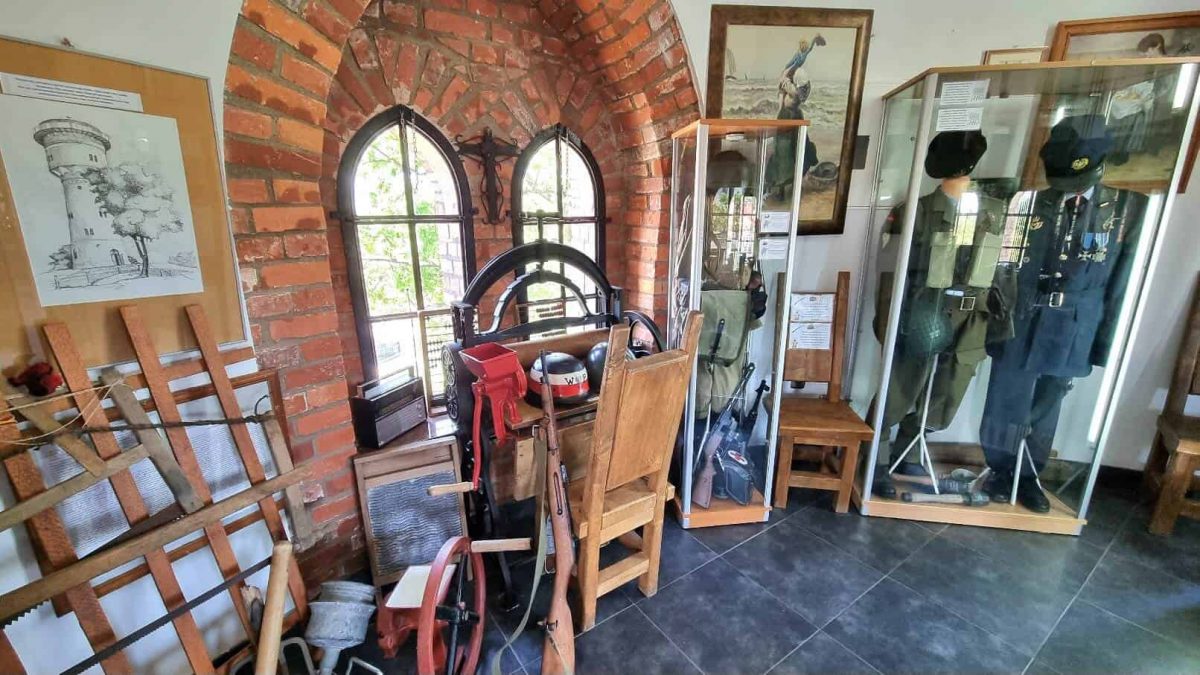
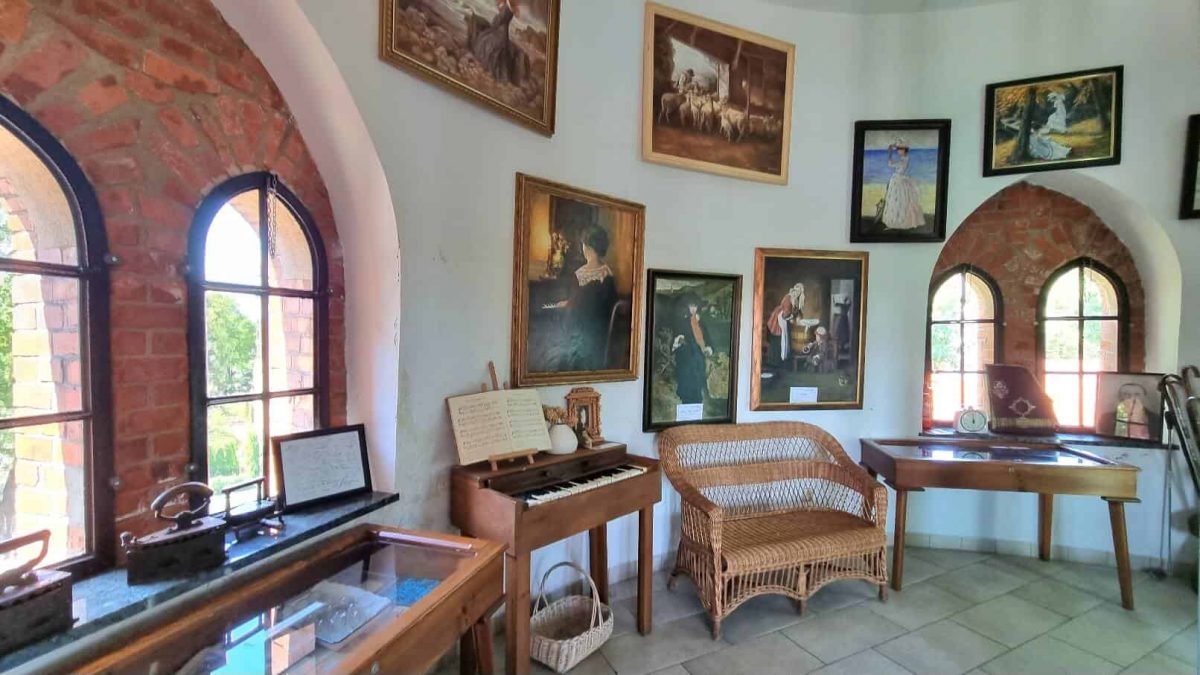
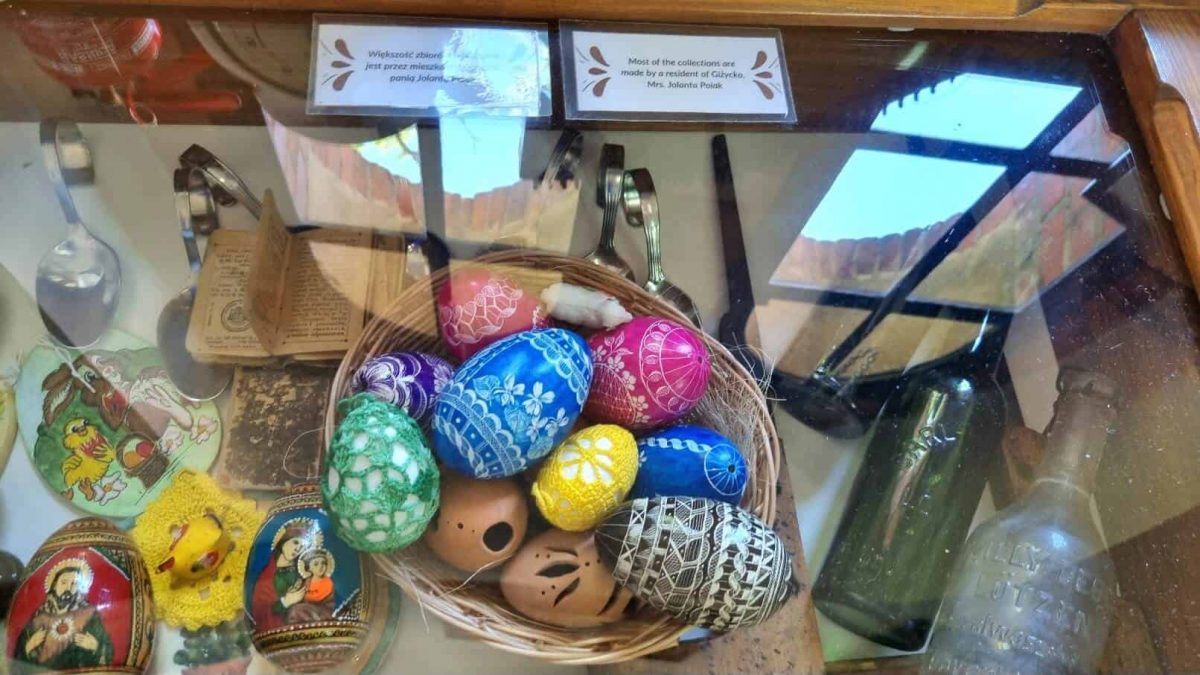

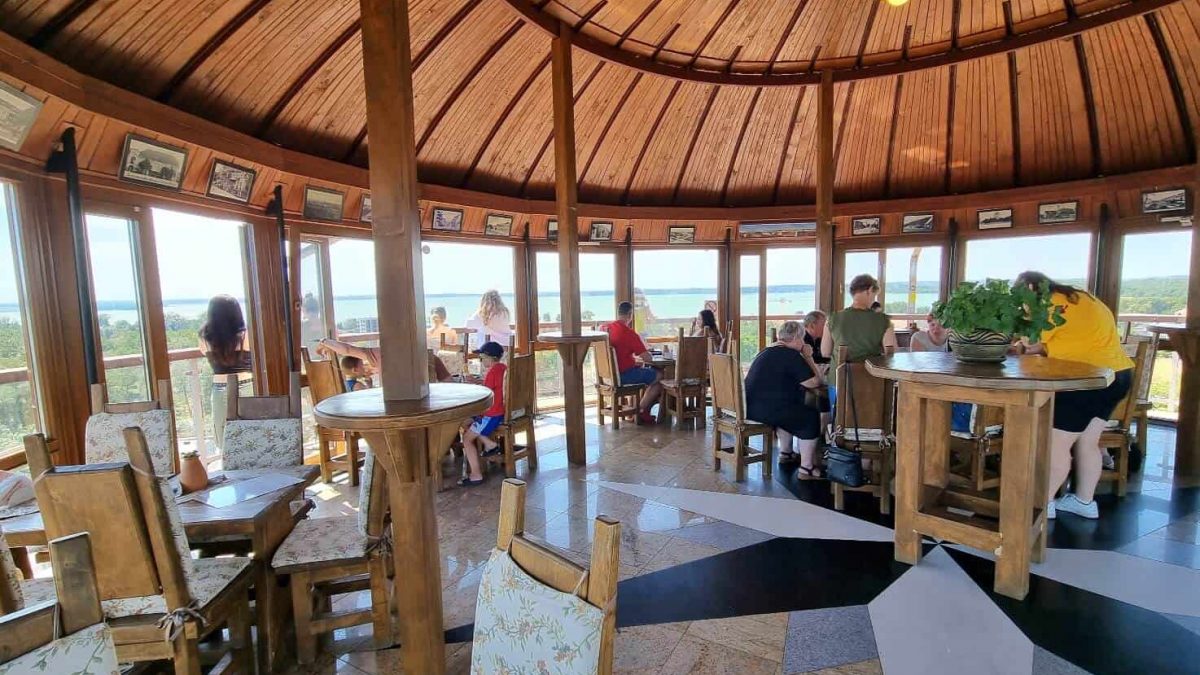
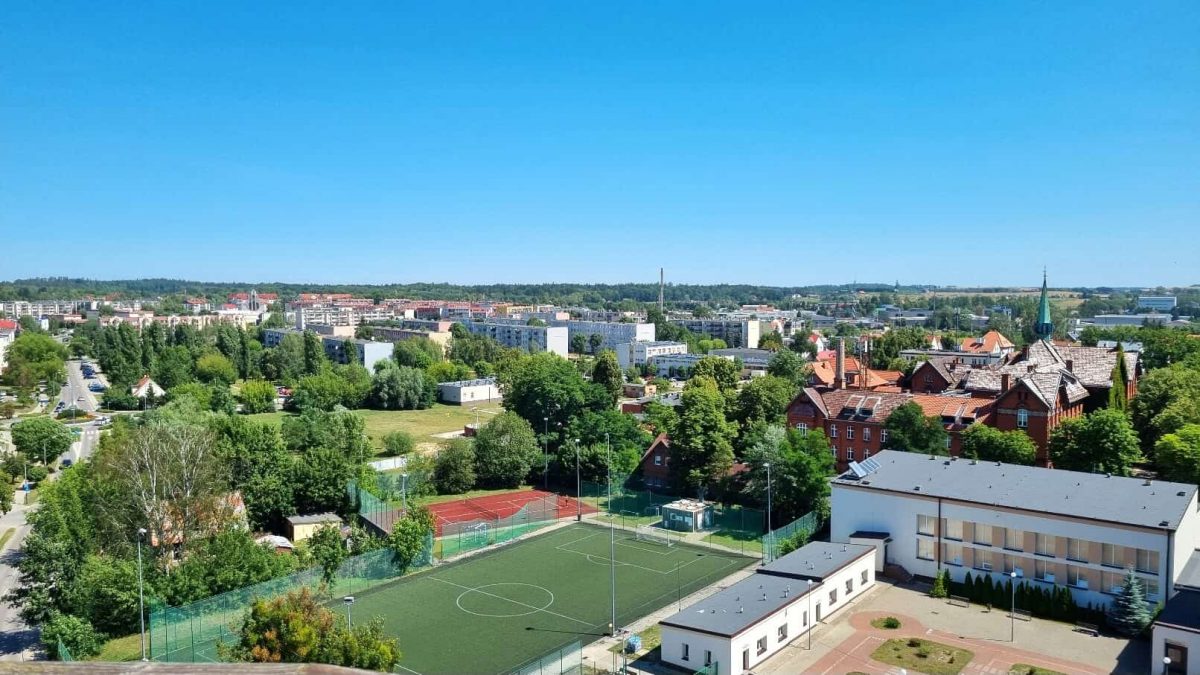

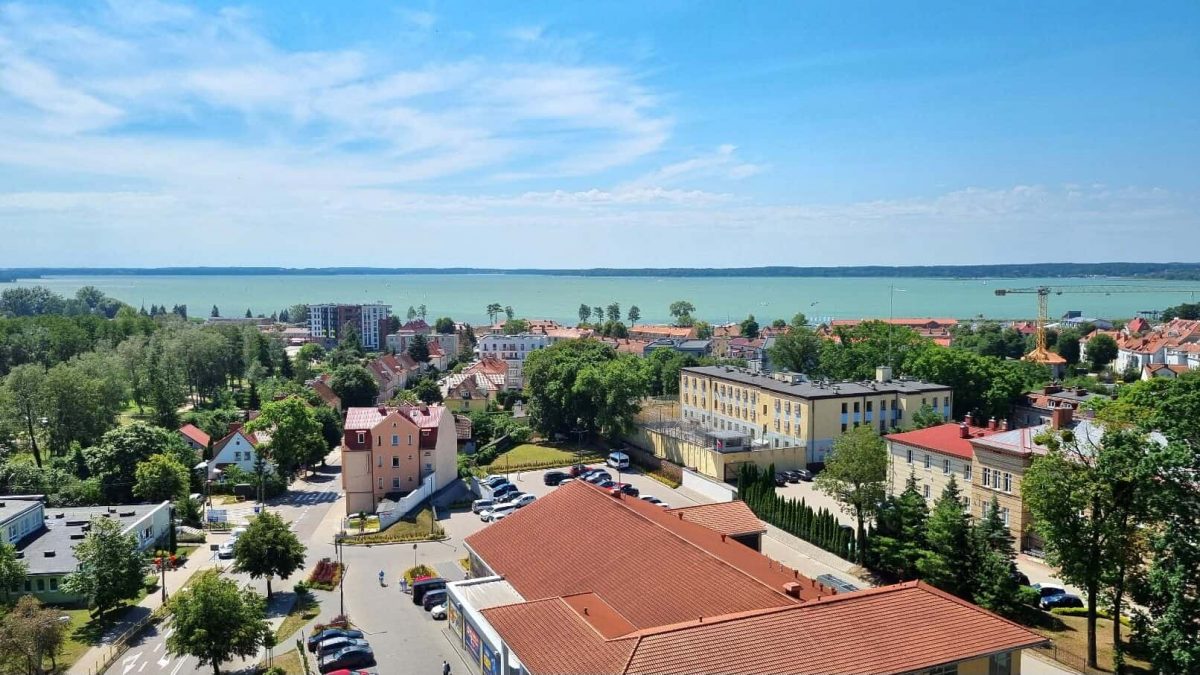

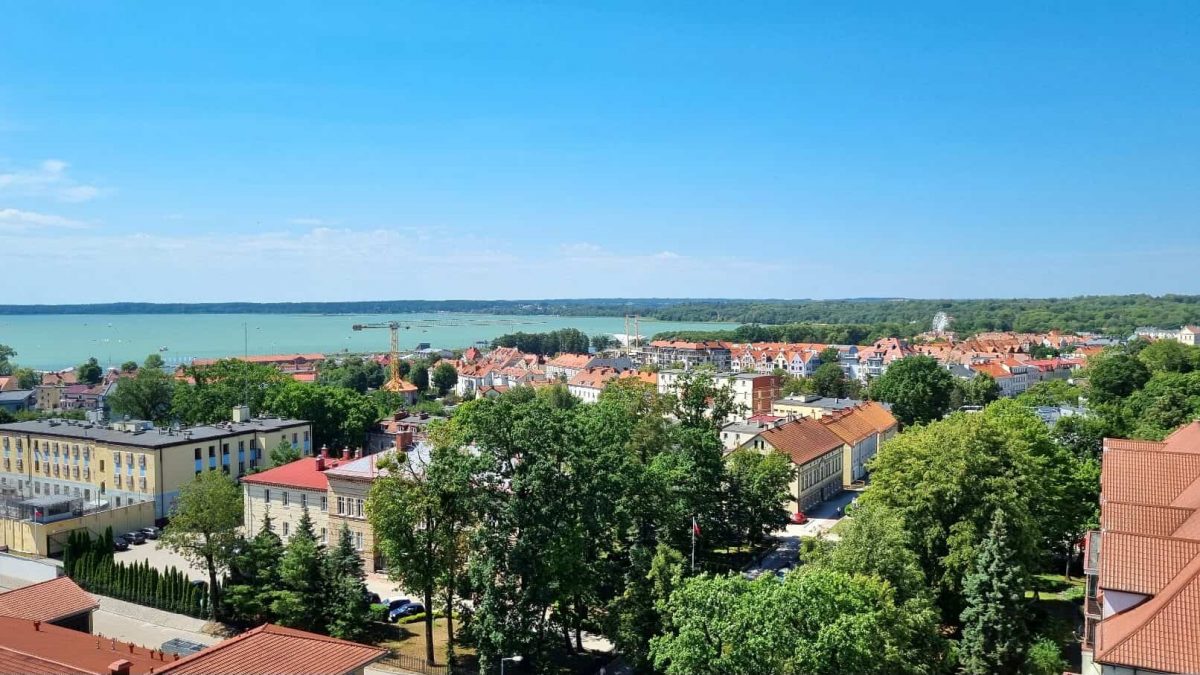
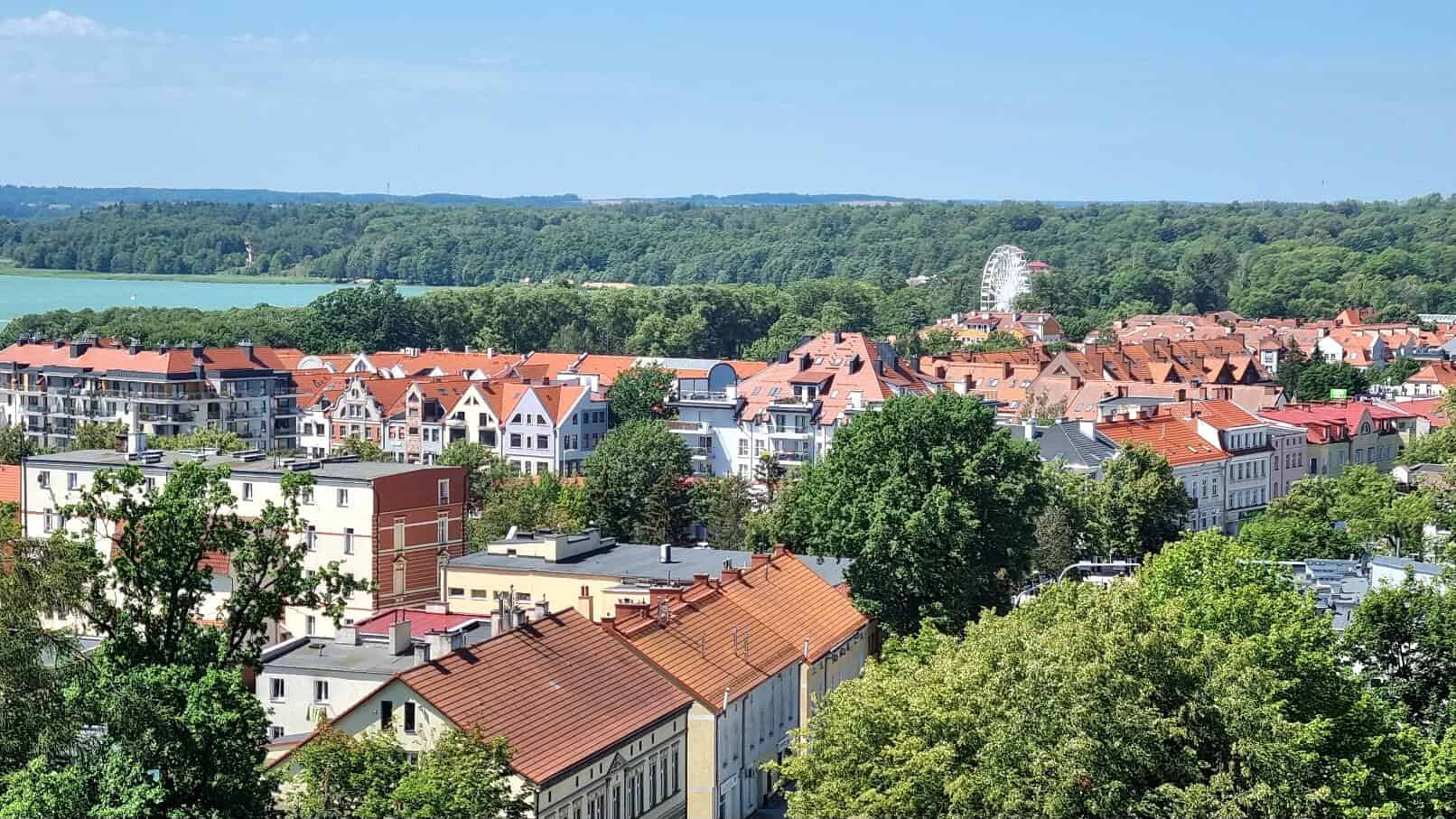
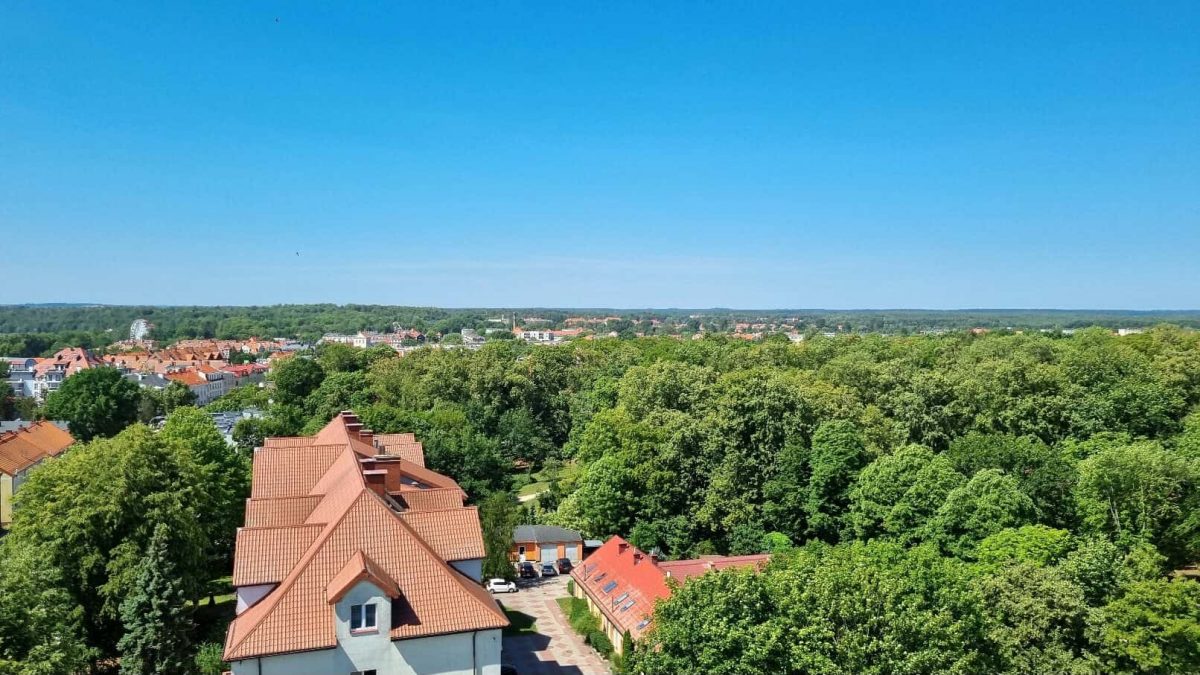

6. Visit Boyen Fortress
The Boyen Fortress is one of the biggest attractions in the entire Masuria region, let alone Giżycko.
Built in the years 1843-1855, the purpose of building the fortress in its chosen location was to block the strategic isthmus between lakes Niegocin and Kisajno. At the beginning of April 1843, King Frederick William IV of Prussia ordered the construction of the fortress to begin. A project was developed which assumed the construction of a hexagonal earth and brick barrier fort.
Entrance roads to the fort were to lead through the Giżycka, Kętrzyńska, Prochowa and Wodna gates, while the entire complex was to be surrounded by a 2,303-metre-long Carnot Wall. The cornerstone laying ceremony, which took place on September 4, 1844, initiated the construction of the Fortress.
In 1846, the fortress was named in honour of one of the leading supporters and initiators of the construction of this facility, Prussian Minister of War, General Hermann von Boyen. The bastions were named: Hermann, Ludwig, Leopold (from the general’s names) and Schwert, Recht and Licht (from the symbols in the general’s coat of arms – Sword, Law and Light). The fortress itself was named “Feste Boyen”.
Key Dates – The Construction and Early Development of the Boyen Fortress in Giżycko
1818 – The first plans for the construction of the fortress may be traced back to 1818. These plans reflected the experiences of General von Grolman and von Boyen during the Napoleonic Wars
August 9, 1841 – The final decision to build the fortifications. Johann Leopold Ludwig Brese, who had previously designed Fort Winiary and other defensive fortifications belonging to the Poznań Fortress, authored the design of Giżycko Castle
1842 – Generals Von Grolmann, von Krauseneck and von Aster visited the area to agree upon a location for the fortress
5 April 1843 – Under the orders of King Frederick William IV of Prussia, construction began. Initially, the area was levelled and wells were dug
4 September 1844 – The cornerstone was laid
24 December 1846 – King Frederick William IV officially named the fortress Feste Boyen (Boyen Fortress) after the aforementioned Hermann von Boyen
1859 – The Giżycko garrison was established
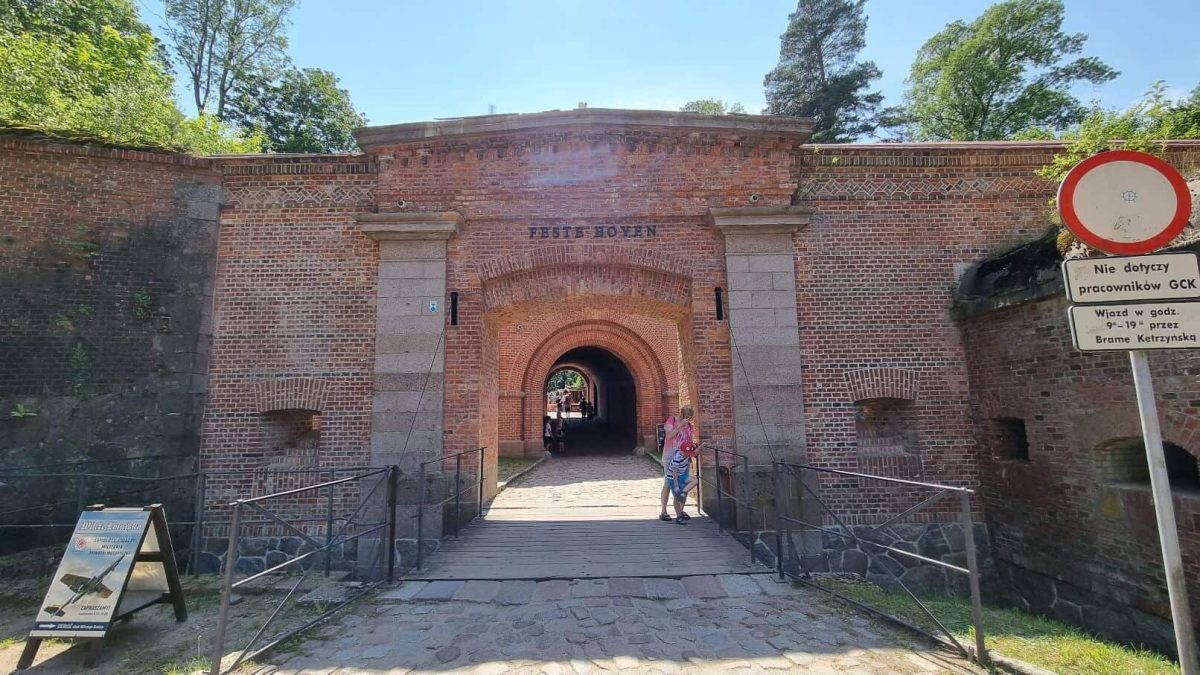
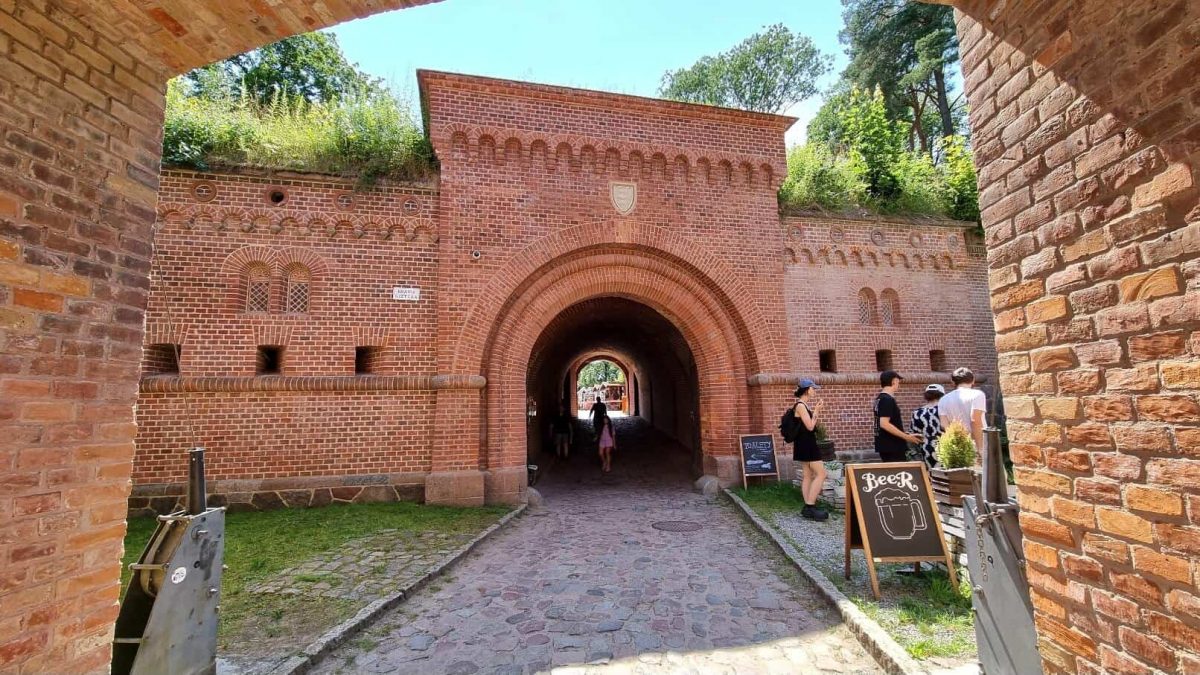
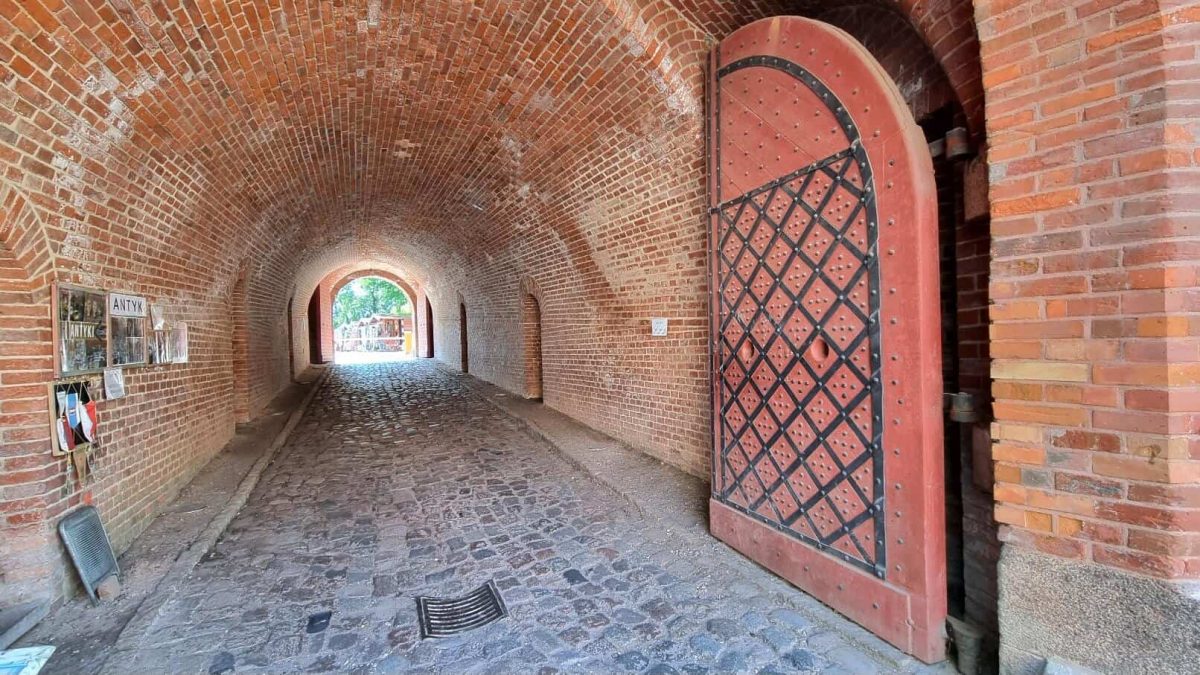
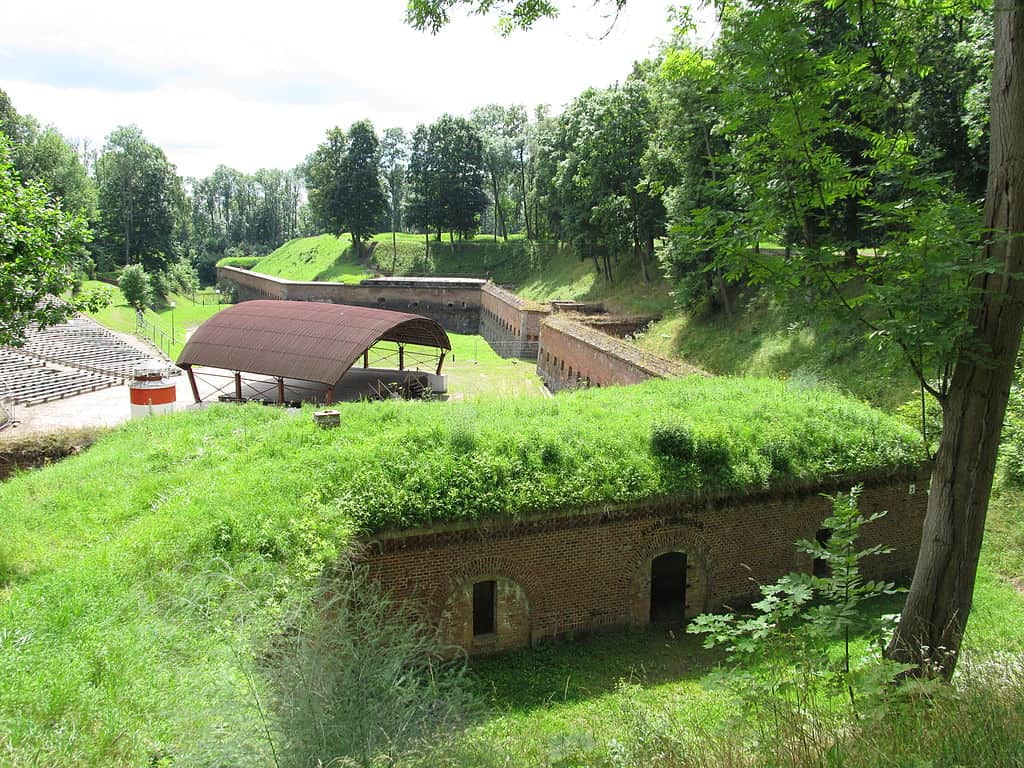
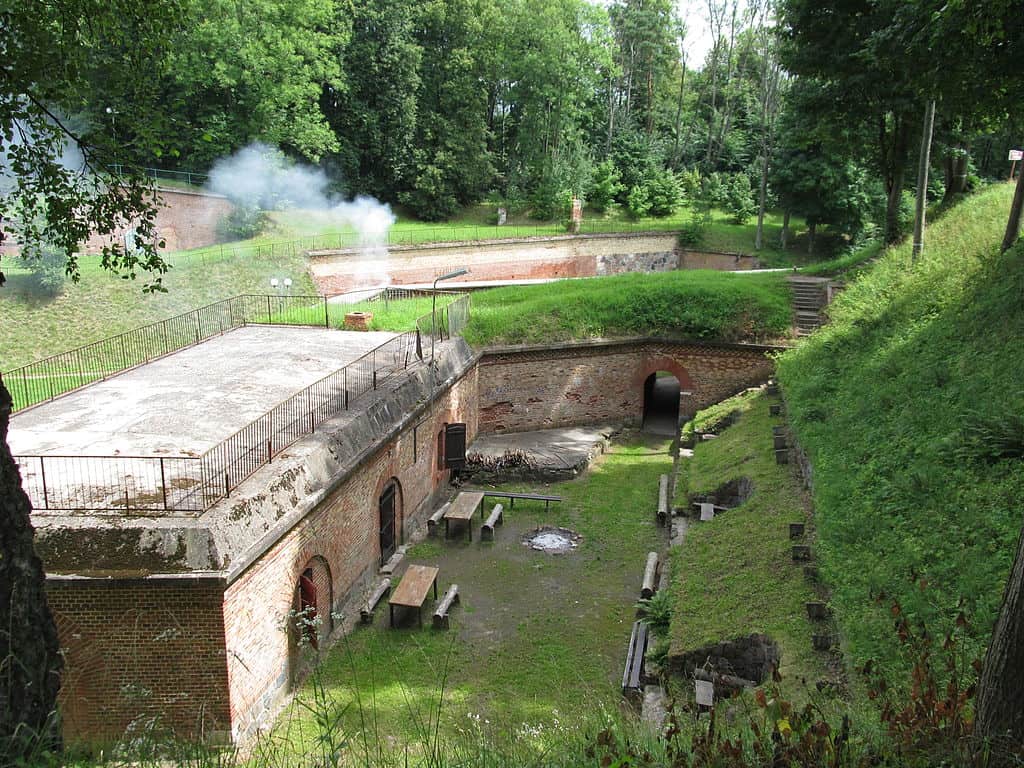
Main Sights at the Boyen Fortress
Check out this page to see a list of the main sights within the Boyen Fortress complex, accompanied by this map of the fortress.
Boyen Fortress Ticket Prices
Summer season (1 April – 31 October)
Normal/adults – 20 zł
Concessions – 16 zł
Groups (20 or more people) – 18/14 zł
Children under 7 – FREE
Winter season (1 November – 31 March)
Normal/adults – 14 zł
Concessions – 12 zł
Children under 7 – FREE
7. Giżycko Pier
The first pier in Giżycko was built in 1970. With the help of funding, it was strengthened and enlarged in 2011.
Giżycko walking pier is 406.94 m long and is second in length only to the wooden pier in Sopot. The reinforced concrete structure does not run straight into the water. After approximately 72 metres, the pier changes direction so that it’s parallel to the shore of the lake, thus acting as a breakwater for the port and Ekomarina.
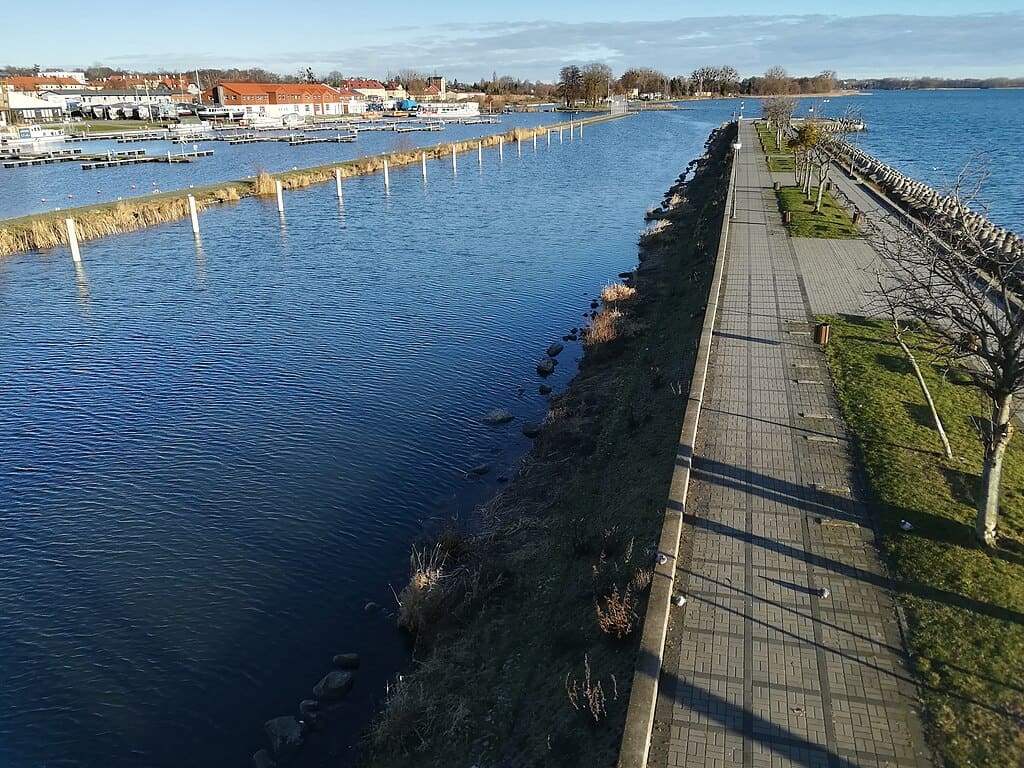
8. Footbridge over the Ekomarina Port and Pier
The footbridge over the Pier and Ekomarina Port in Giżycko offers beautiful views across Lake Niegocin and the Ekomarina.
For the most stunning views, head to the bridge at sunset.
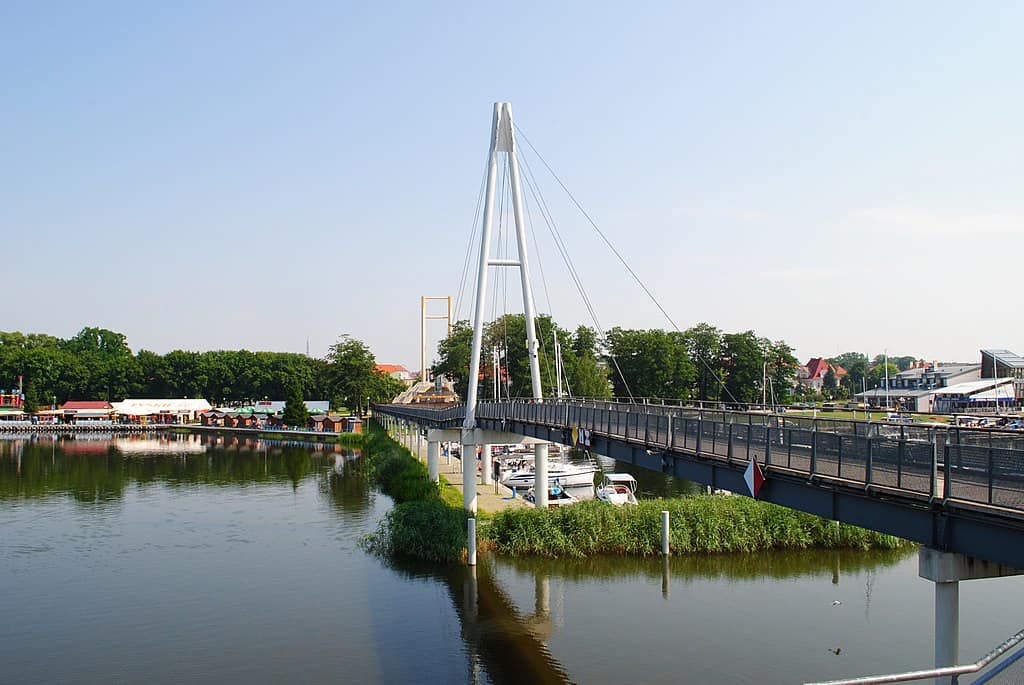
9. The Hill of St. Bruno of Querfurt
On the morning of my wife’s and my second day in Giżycko, we parked up at Saint Bruno’s Hill (Wzgórze św. Brunona), just off the northwest corner of Lake Niegocin.
Not counting a walk through the woods, there are two major attractions on St Bruno’s hill:
The Cross of Saint Bruno of Querfurt
Born in around 974 in Querfurt, Saint Bruno of Querfurt was a Christian missionary bishop, martyr and monk. Also called the second “Apostle of the Prussians“, Saint Bruno was beheaded by Pagans in 1009 for attempting to spread Christianity among the Prussian people.
In the Middle Ages in Poland, the cult of St. Bruno did not develop and was unheard of in the lands of the Teutonic Order. Interest in Bruno in Poland surfaced in the late 16th and early 17th centuries, mainly in the Benedictine and Camaldolese communities, and in Warmia.
The legend of Bruno’s death in Giżycko turned into a pressing matter for historians. In the years 1907–1909, the German historian Heinrich Gisbert Voigt, based on an erroneous interpretation of mediaeval records, concluded that Bruno suffered a martyr’s death near Giżycko. The local elites, including pastor Ernst Trincker and the Evangelical community, took up this legend, erecting a cross in honour of Bruno and his companions on a hill on the shore of Lake Niegocin in 1910.
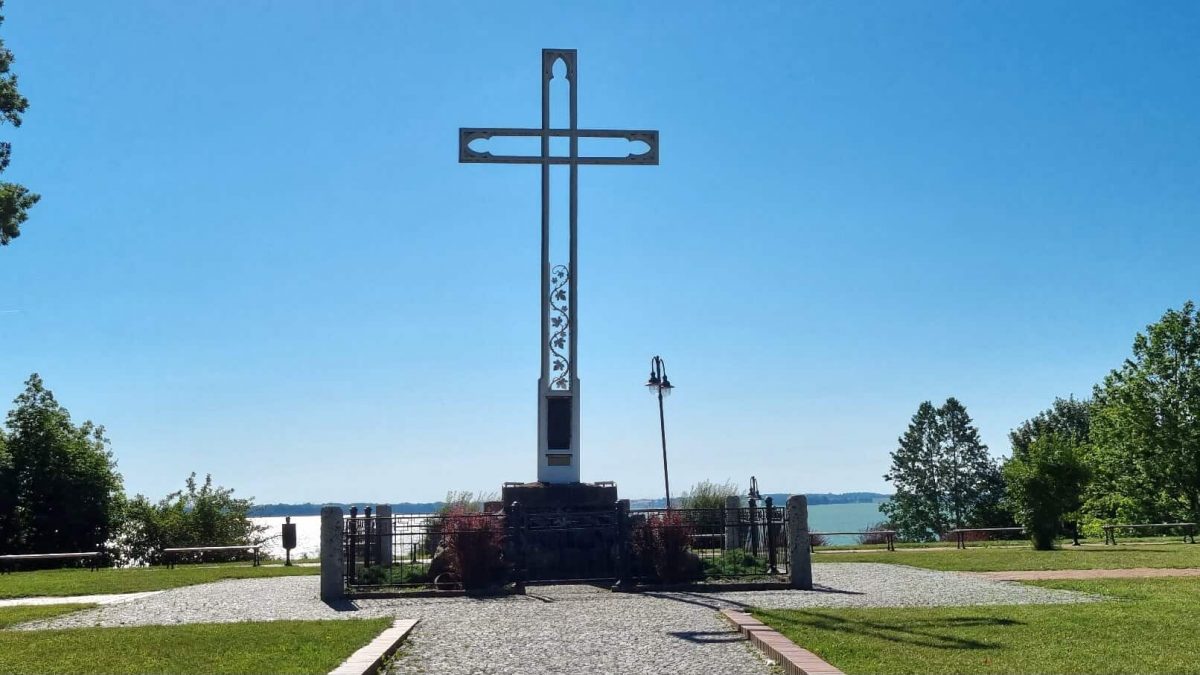
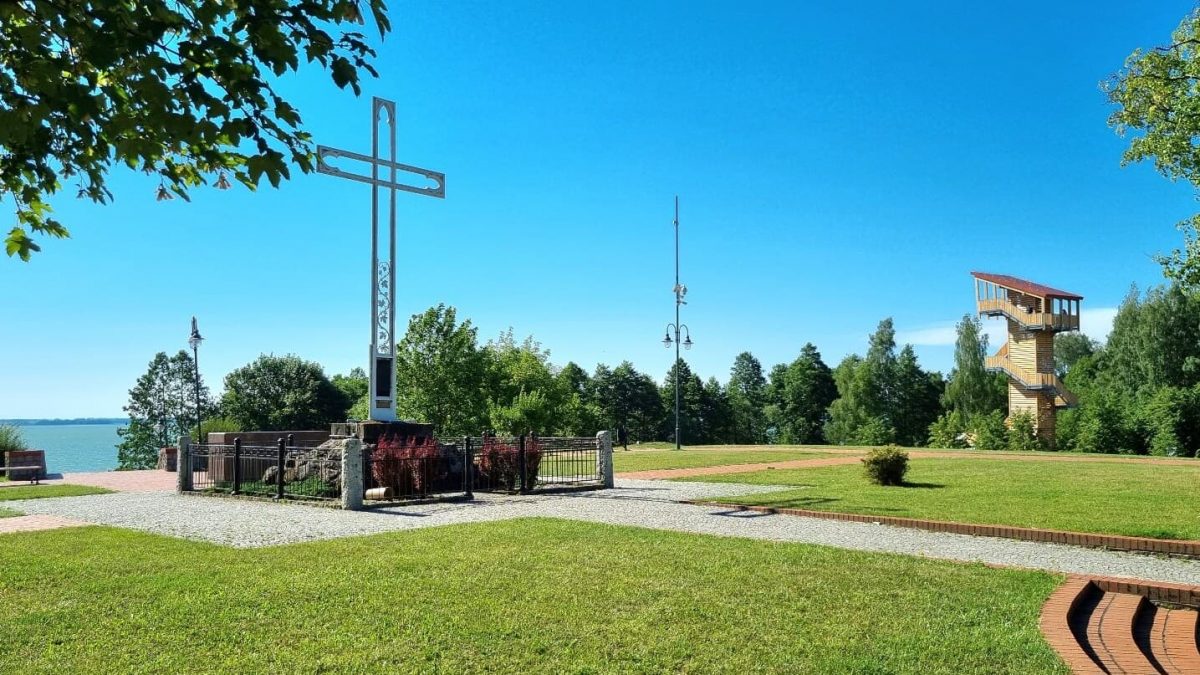
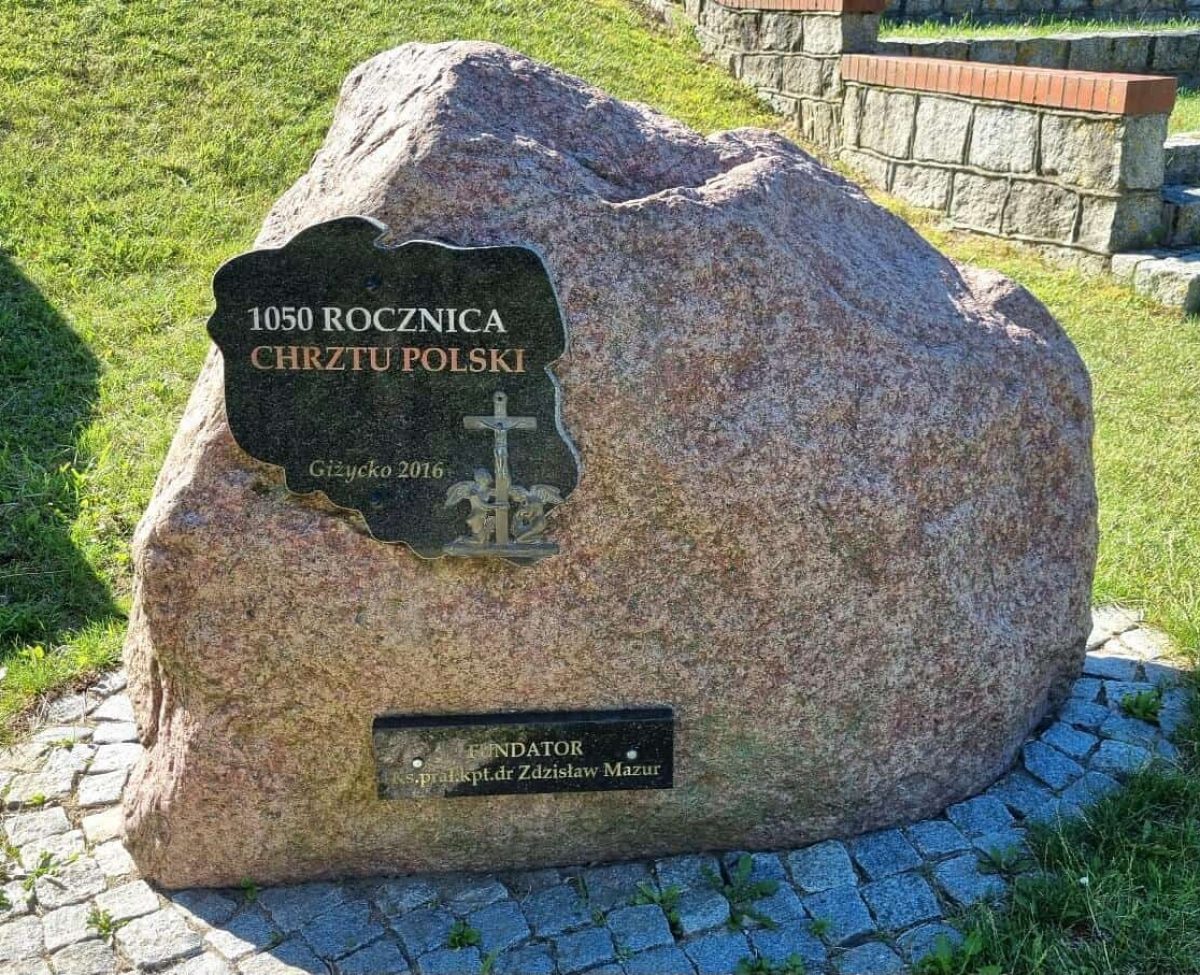
Lake Niegocin Viewing Tower
The Lake Niegocin Viewing Tower on St. Bruno’s Hill is well worth visiting for its beautiful views of Giżycko and the lake.
Entry is free.
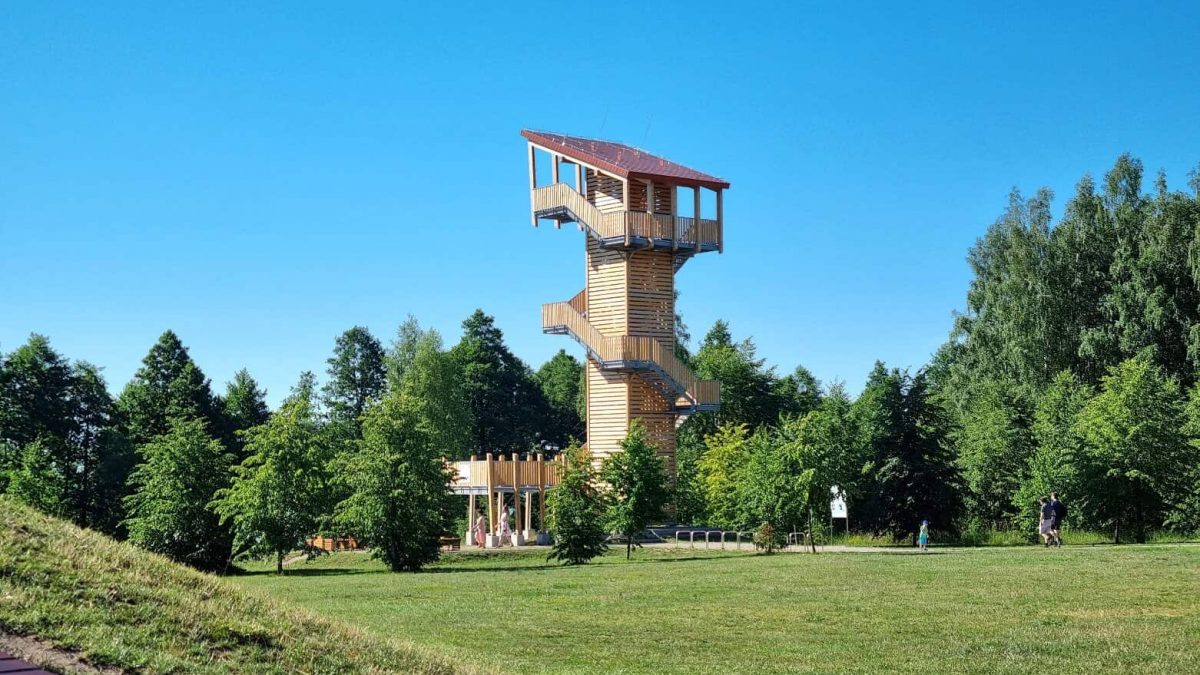
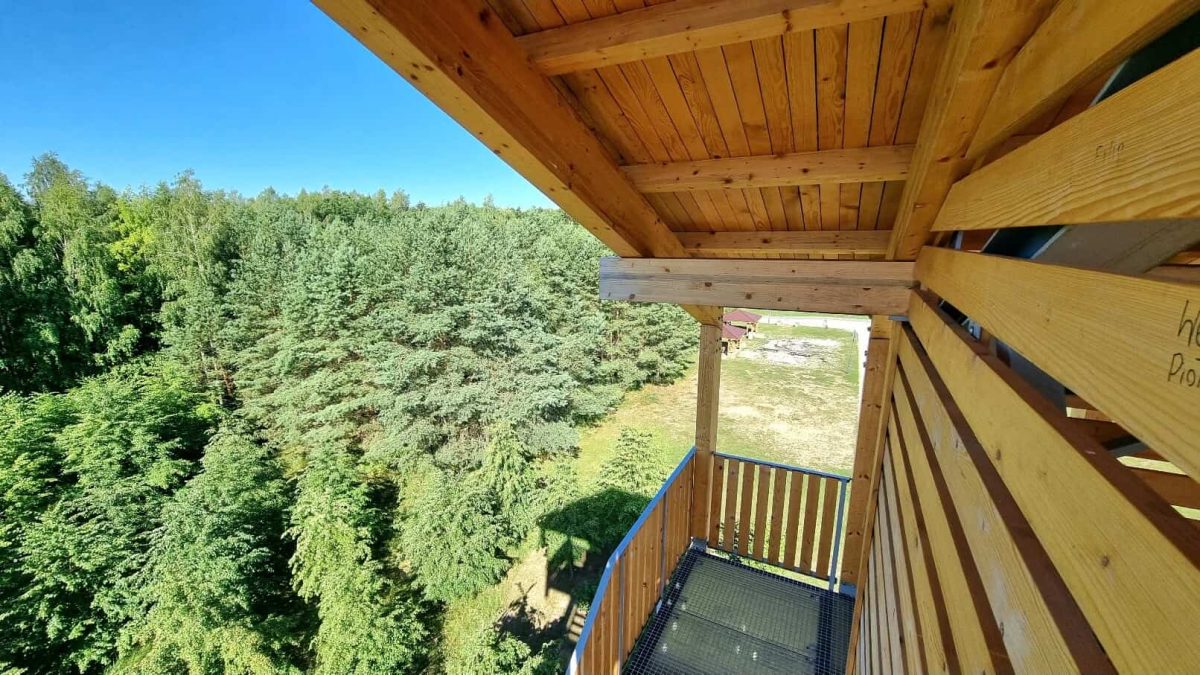
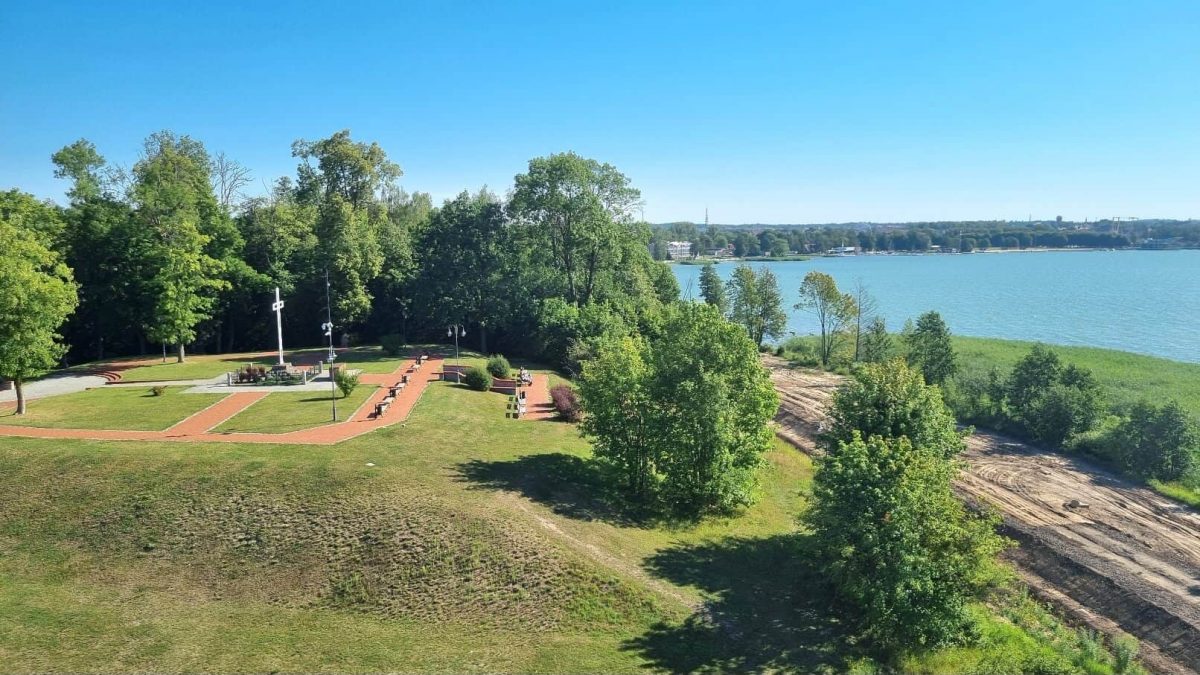
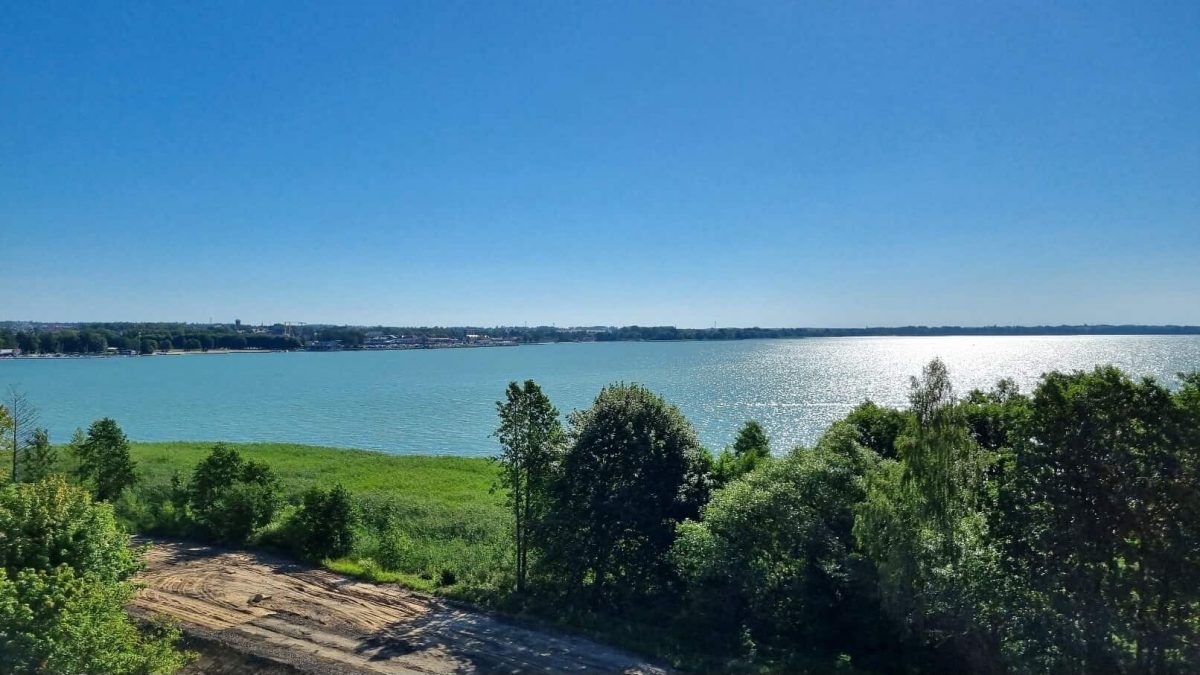
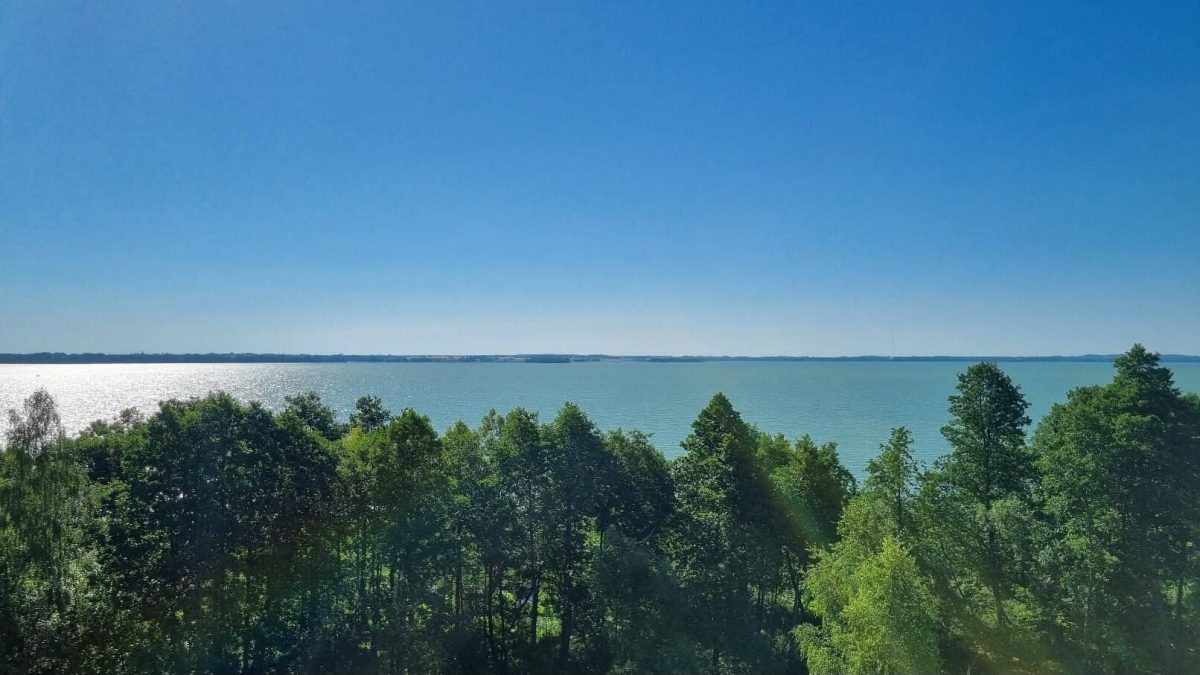
10. Teutonic Castle in Giżycko – Currently Hotel St. Bruno
On the west side of Łuczański Canal, a short distance from the swing bridge, there is a brick castle which is well worth checking out for its architecture.
Records suggest that the first castle in Giżycko was constructed by the Teutonic knights shortly before 1340. It was a wooden stronghold. Apparently, a Teutonic prosecutor resided there in order to fulfil commanding, judicial and administrative duties. Nevertheless, it is not certain whether the castle existed in its current location at that time. It is possible that the previous wooden fortification was located in nearby Piękna Góra.
In the 1360s, the Teutonic stronghold in Giżycko was destroyed by Lithuanians led by Kiejstut, the Grand Duke of Lithuania. However, it is not known whether this concerned the fortifications in the place of the current castle or in Piękna Góra. After that time, the castle was not mentioned until around 1399. Then, there was already a Gothic building in the place of today’s castle. This was probably built in the years 1377-1380.
Owing to wars between the Teutonic Order and Kingdom of Poland, the castle was twice set on fire during the fifteenth century and, again, in the early part of the sixteenth century.
In the second half of the 16th century, the castle underwent a Renaissance reconstruction. Further changes took place in the 17th century during its adaptation to the role of a hunting residence of the electoral princes. In 1794, the castle was rebuilt after a fire, and in the nineteenth century, modernisation and demolition works were carried out several times. In 1852, the castle was bought by the army and, after adaptation, the building was used as housing for the commandants of the nearby Boyen Fortress.
The main castle building, having suffered minor damages in 1945, was rebuilt in 1948.
The Present Day: Hotel St. Bruno – the Former Teutonic Castle
Only the two-storey mediaeval main house with buttresses and Renaissance gables, which replaced the Gothic ones in the 16th century, has been preserved to this day. Three preserved basements can be found under the building.
In 2011, the castle was renovated and surrounding recreational buildings popped up. Currently, the castle is home to a Hotel – named after Saint Bruno of Querfurt.
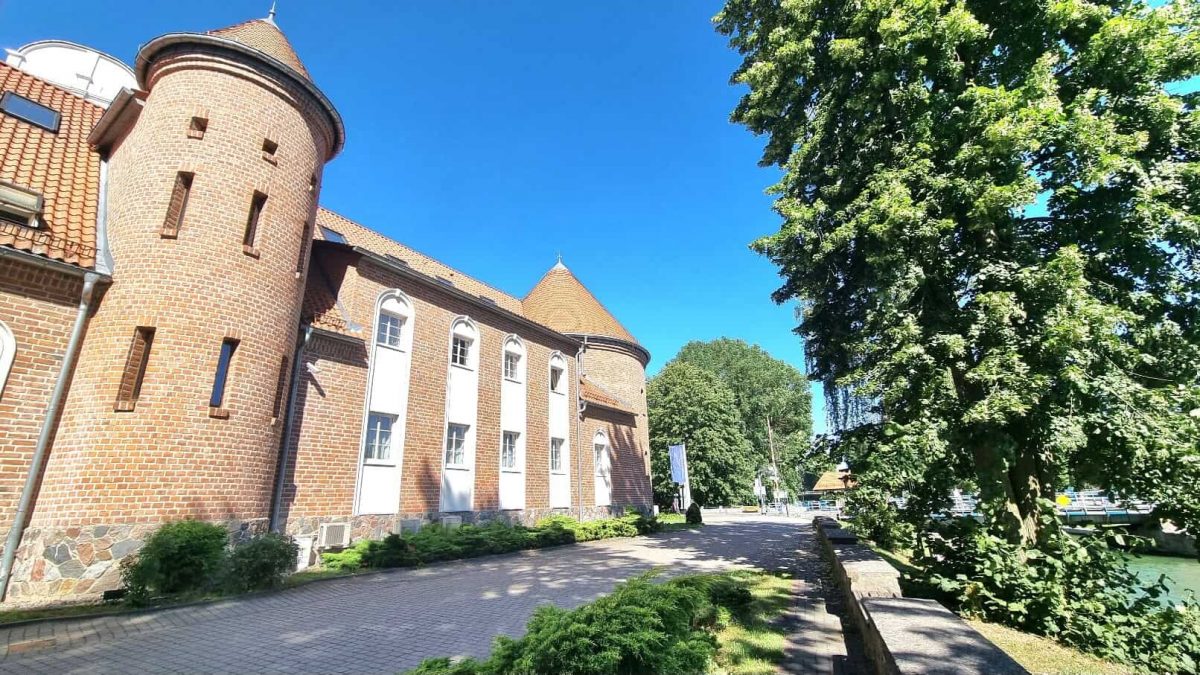
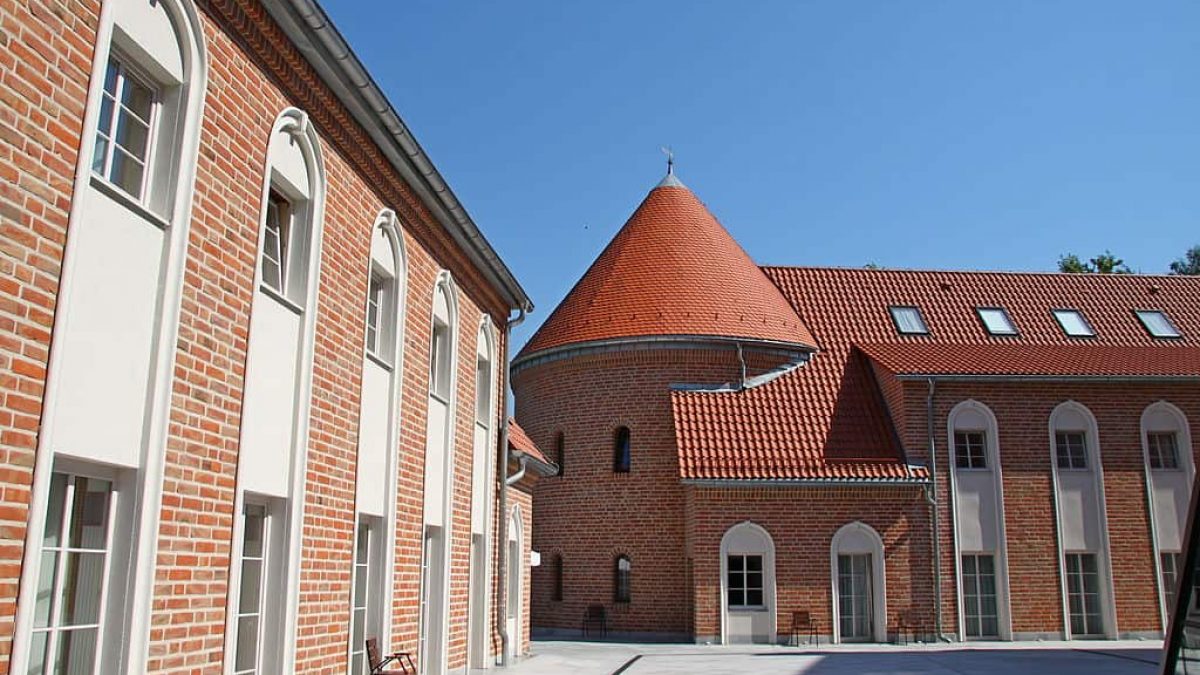
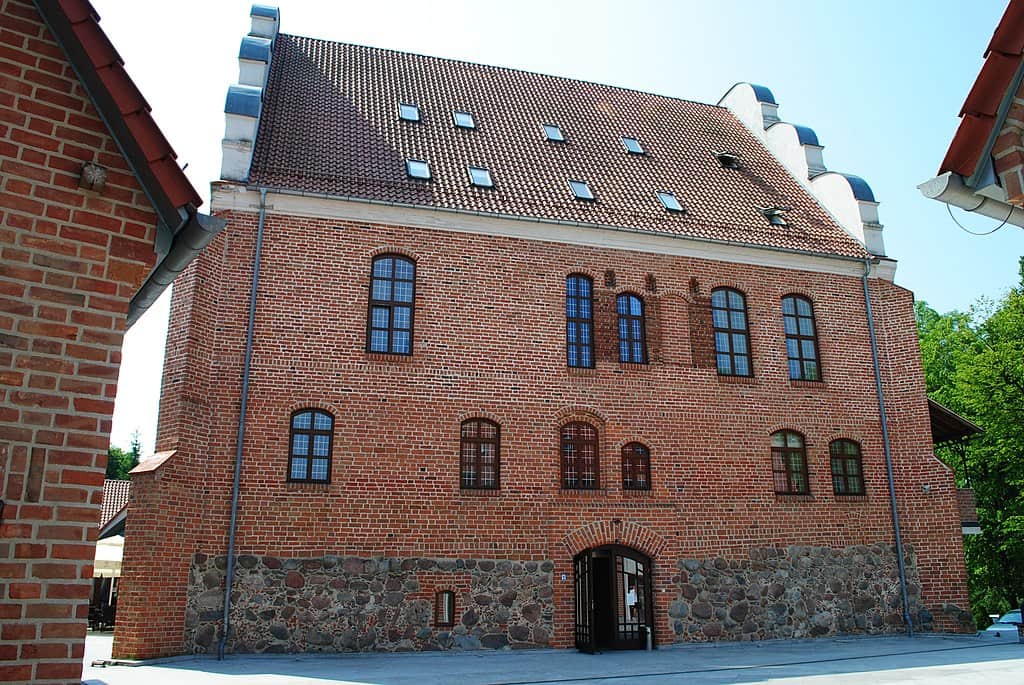
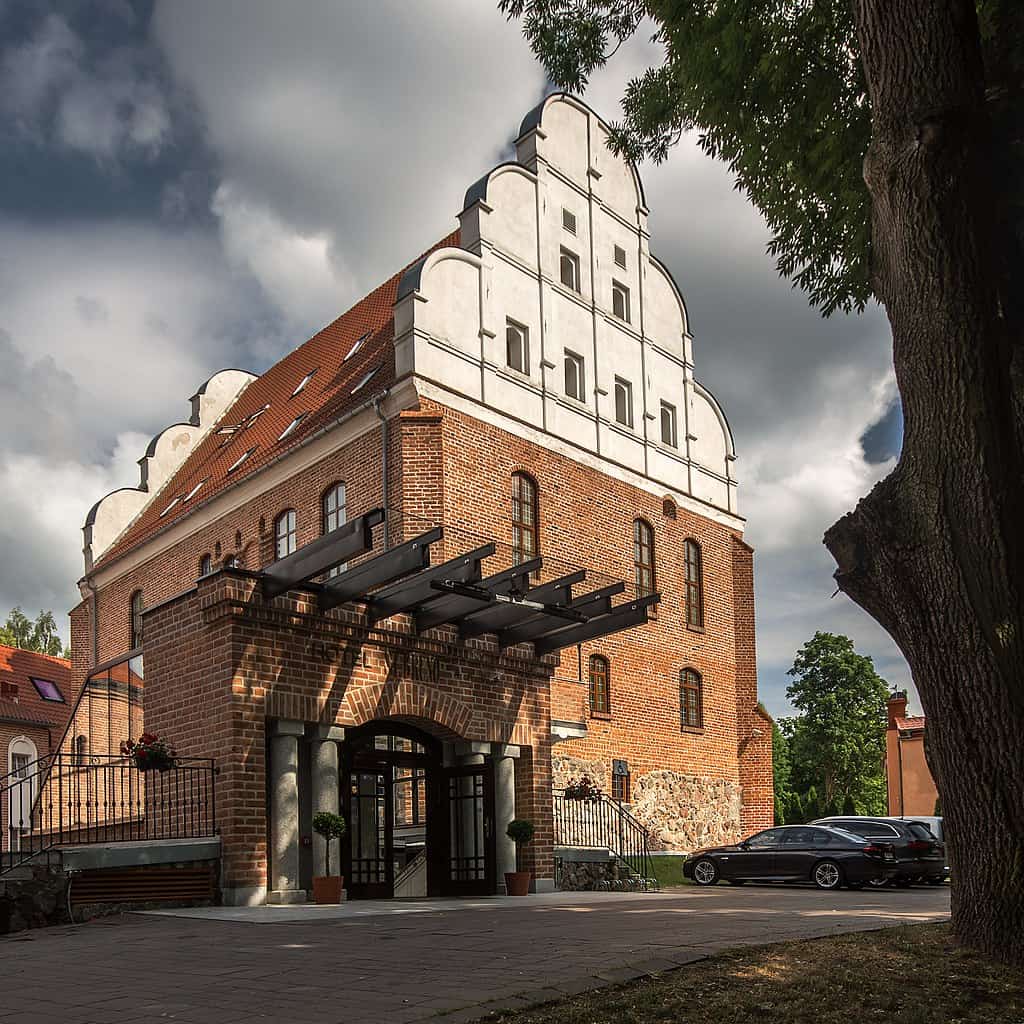
11. Check out the tenement houses on Warszawska, Pionierska and Dąbrowskiego Streets
At the end of World War II, when the front rolled through Masuria and the Red Army destroyed German towns out of pure retaliation, many tenement buildings did not survive, and others fell into ruin. However, there are a few original, pre-war buildings in Giżycko.
If you are curious to find out what the buildings of pre-war Giżycko looked like, go to Warszawska, Pionierska or Dąbrowskiego streets. It is there that you will find tenement houses which hark back to old Masurian times.
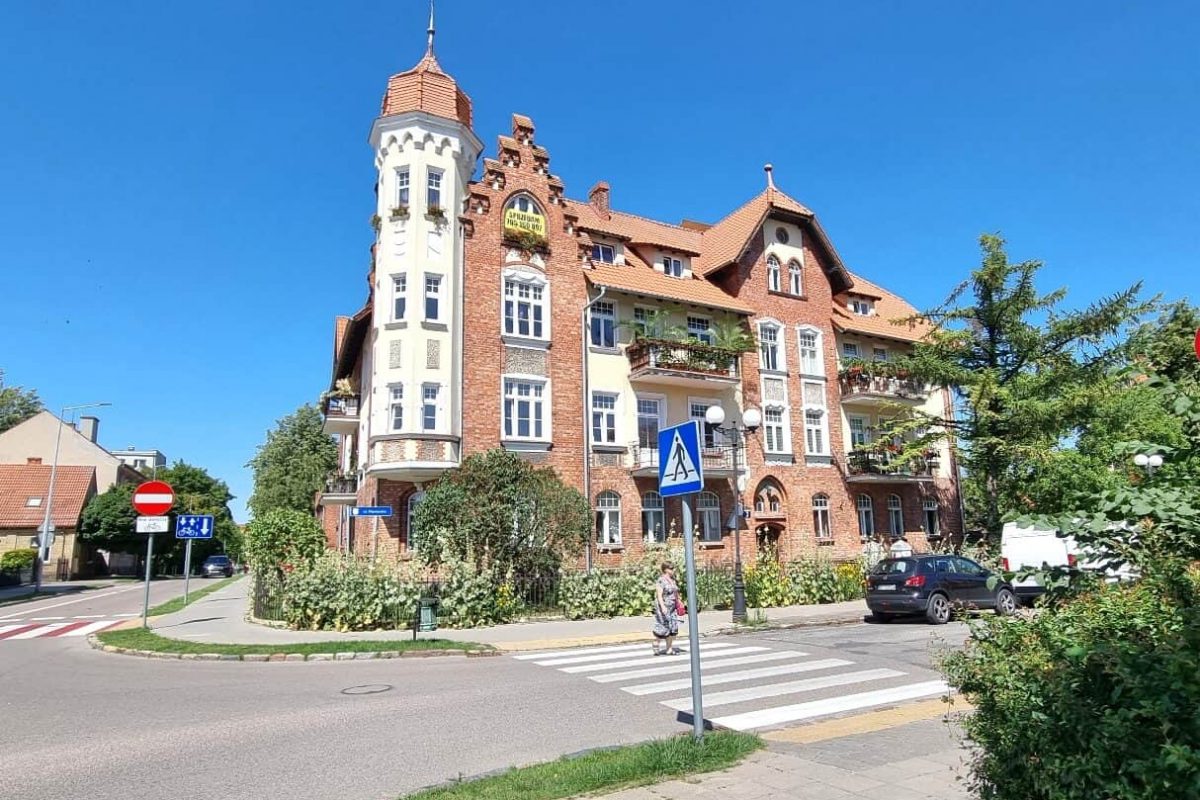
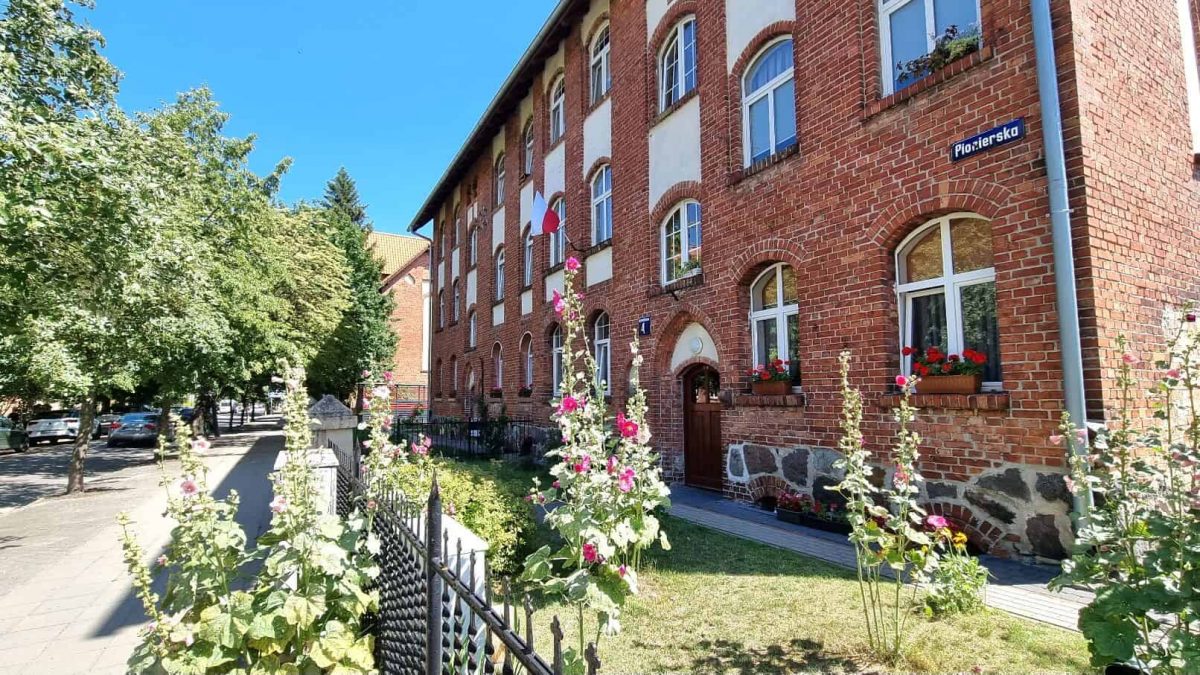
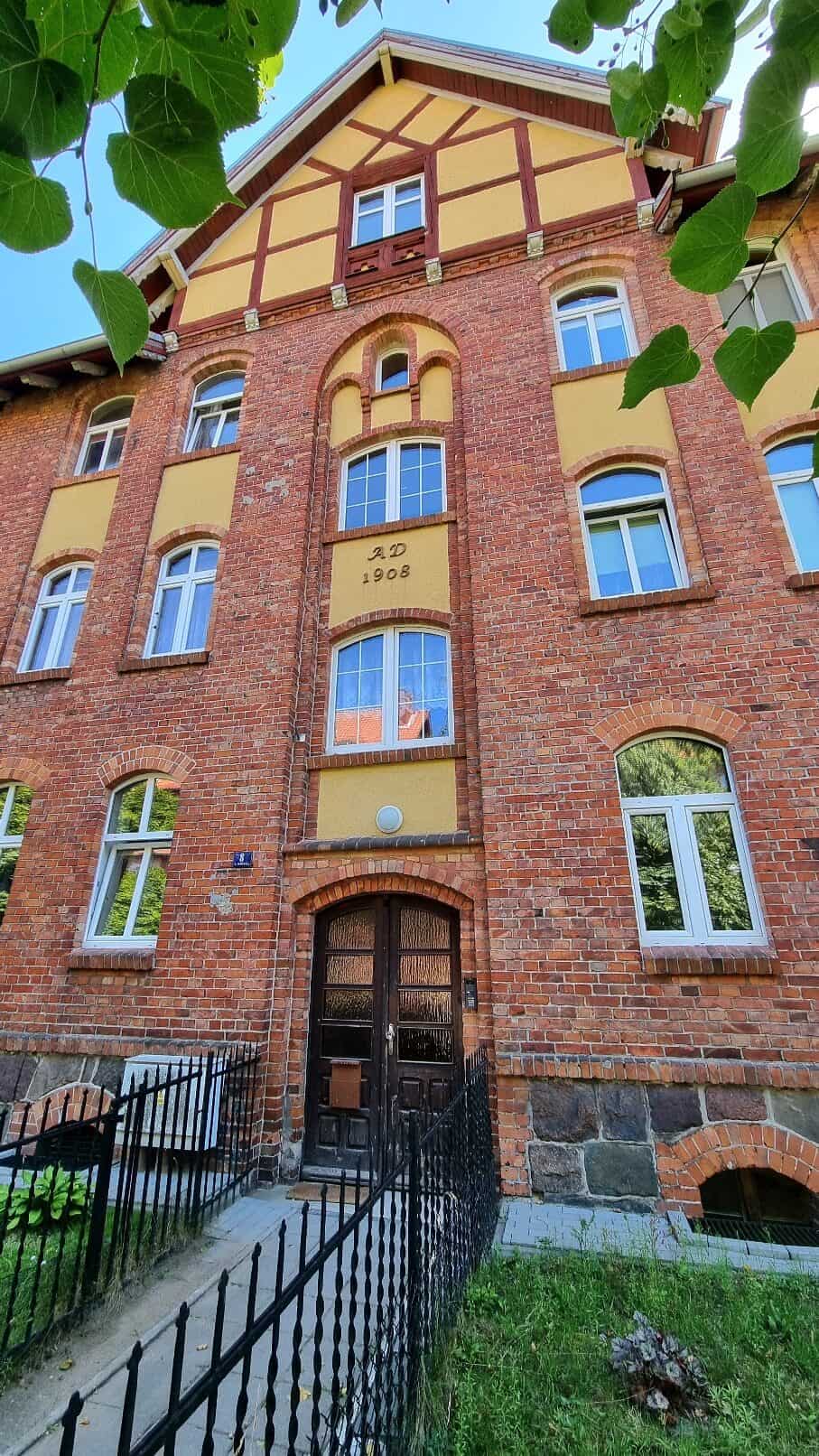
Hotel Masovia at Dąbrowskiego Street 8
At Dąbrowskiego Street 8, there is a restored, Art Nouveau tenement house from the 19th century. It houses the 3* Hotel Masovia.
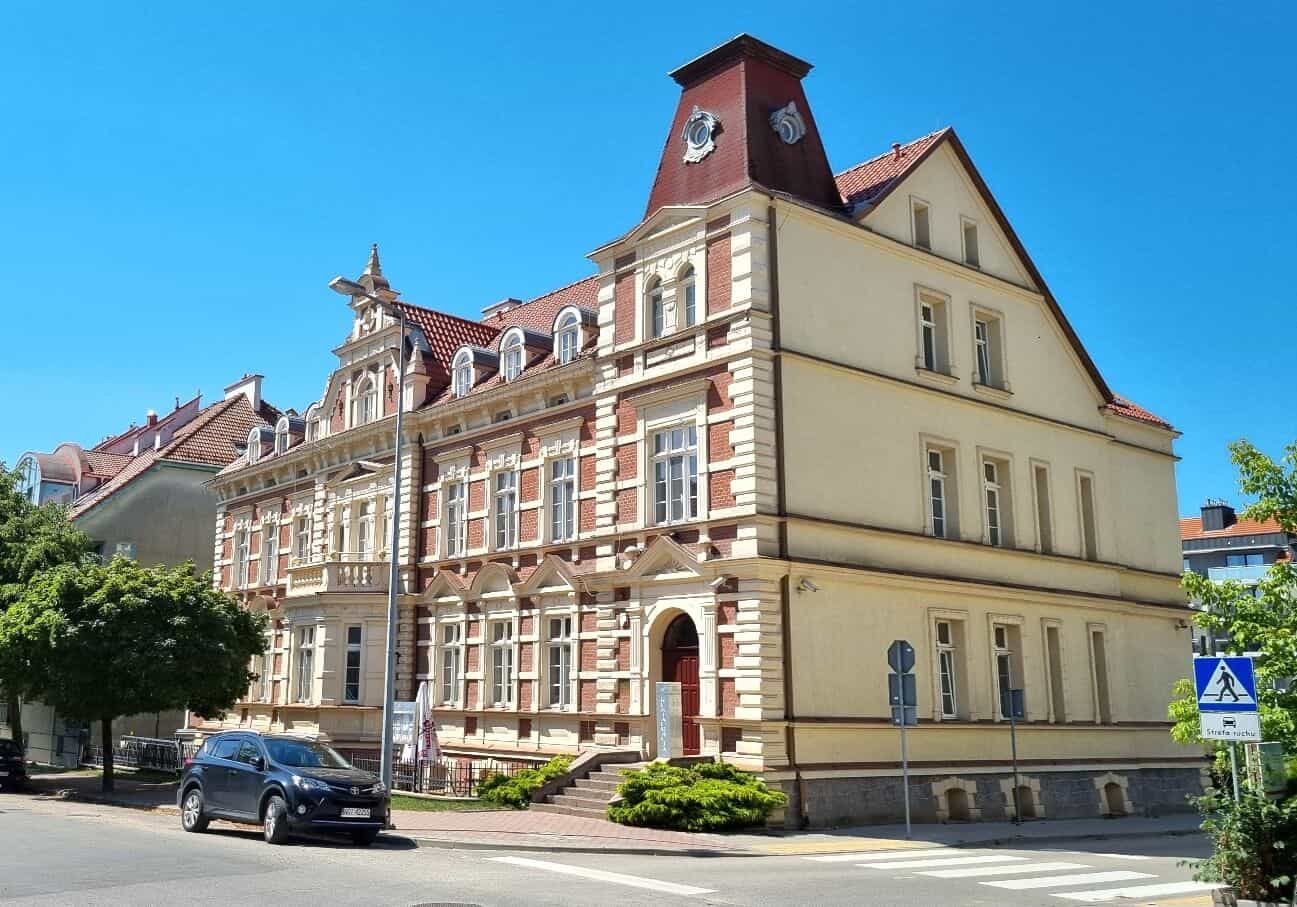
Final Thoughts
Upon reflection, I was wrong to assume that a one-night stay is enough to appreciate Giżycko for all its historical sights and calm-inducing bodies of water. I could spend half a day relaxing in the cafes overlooking Łuczański Canal.
One of my overriding thoughts while I was in Giżycko was: With more visits to the Masurian Lake District, may I come to prefer this region to the Polish Baltic Coast? It’s possible.
Giżycko, Poland – a popular summer tourist destination. However, my experience suggests it’s not an overcrowded one.
Read more about Lake Niegocin:
Lake Niegocin

